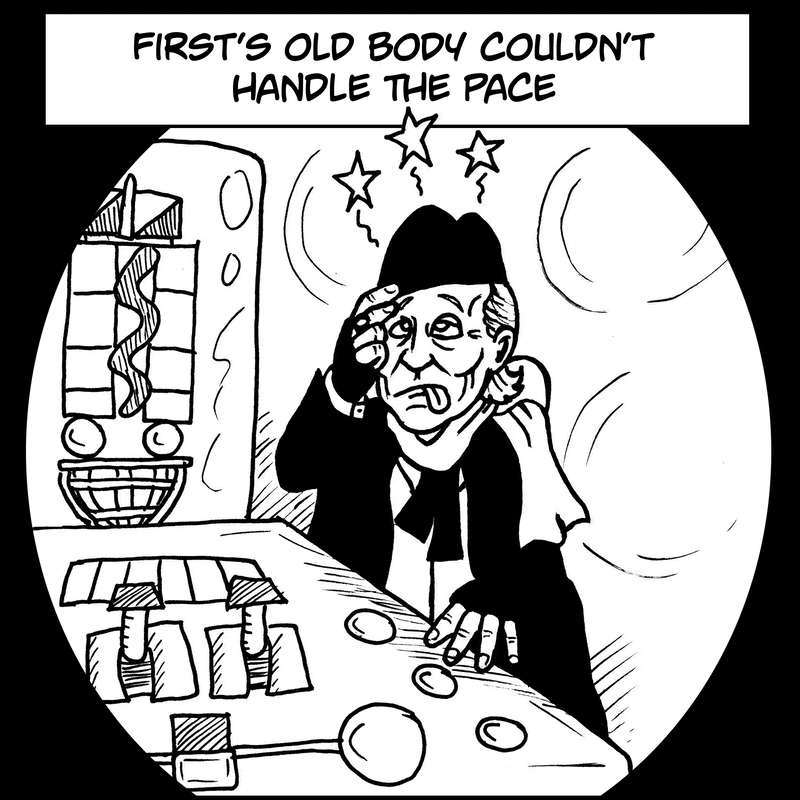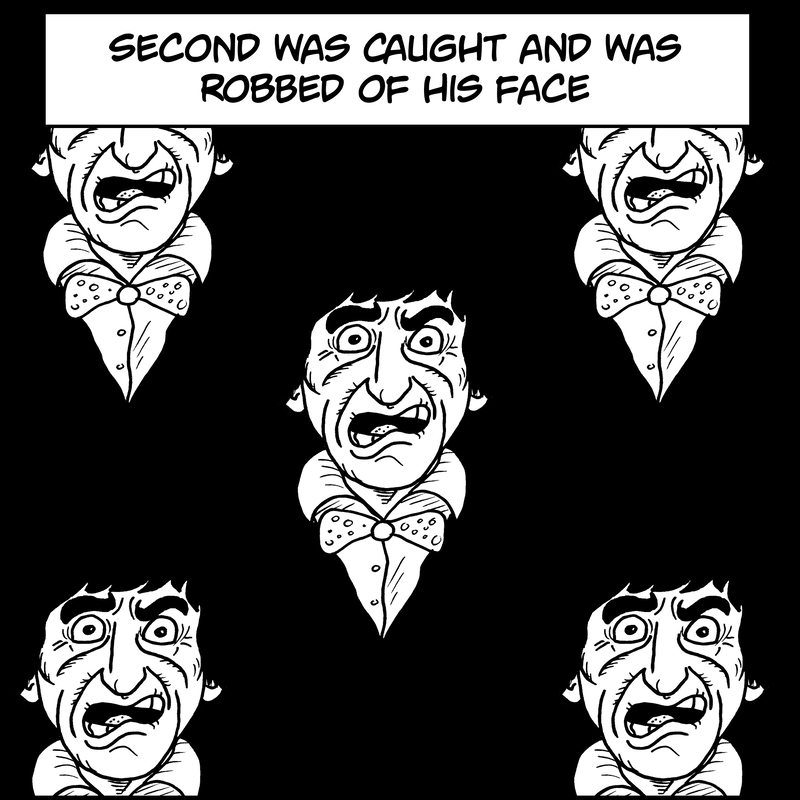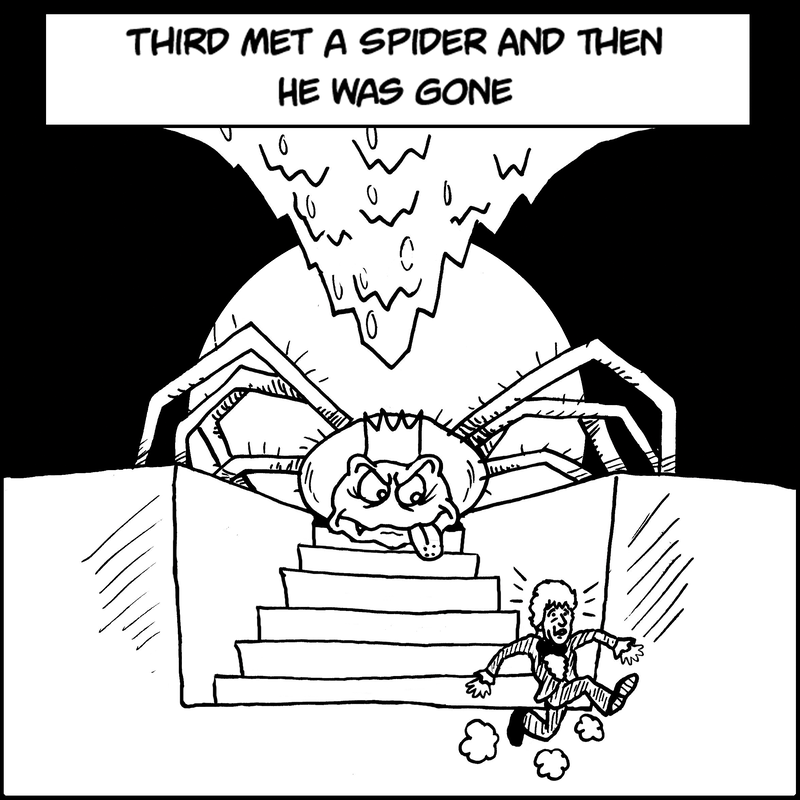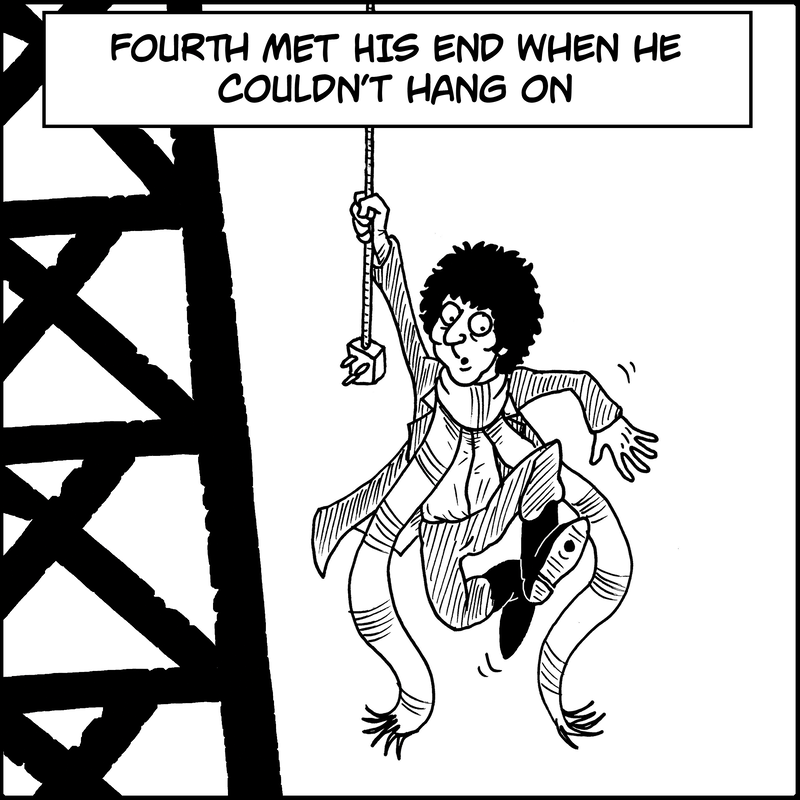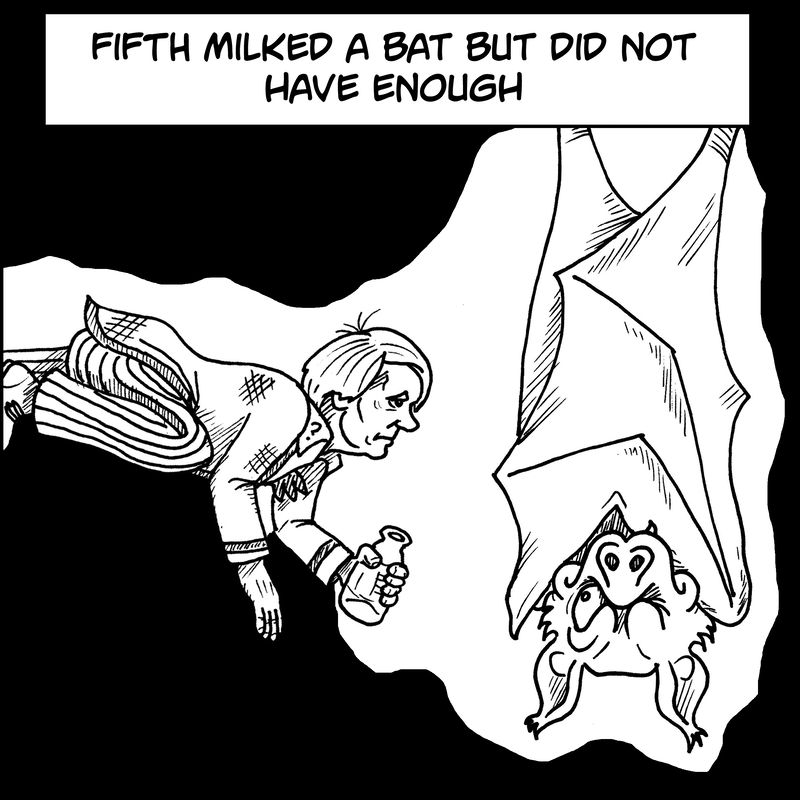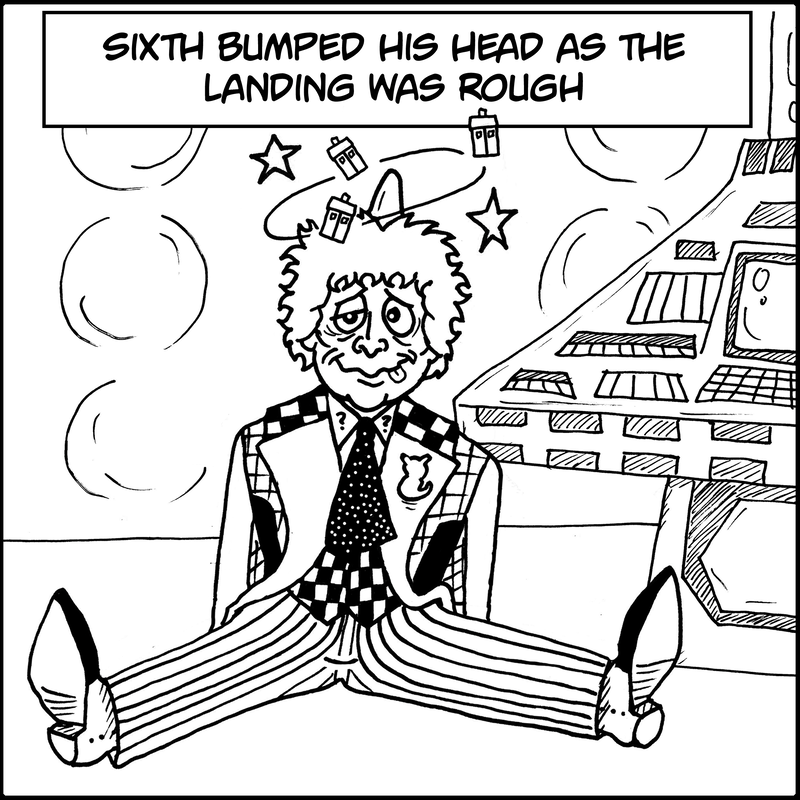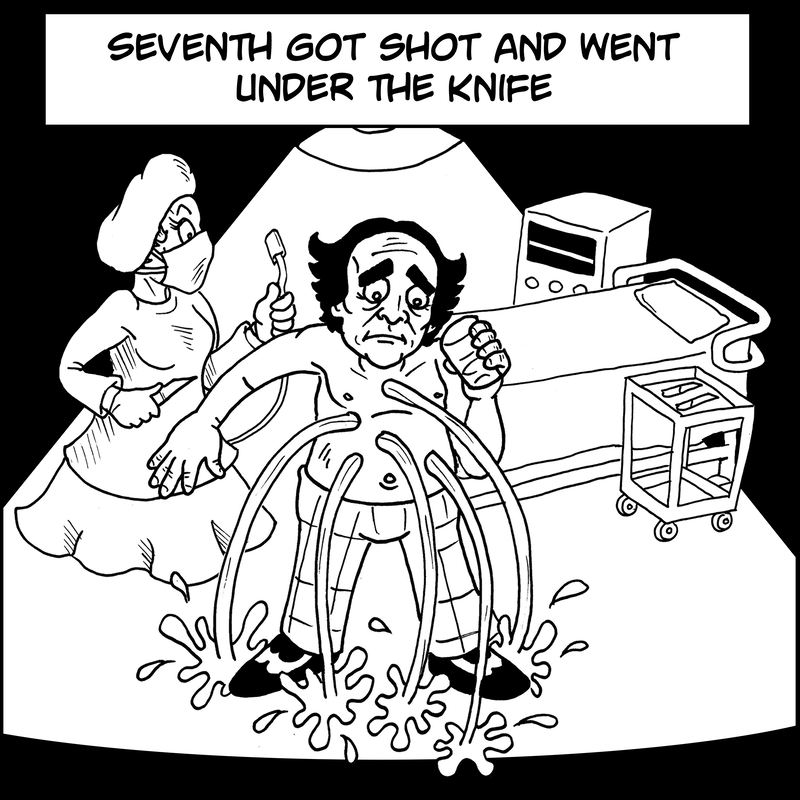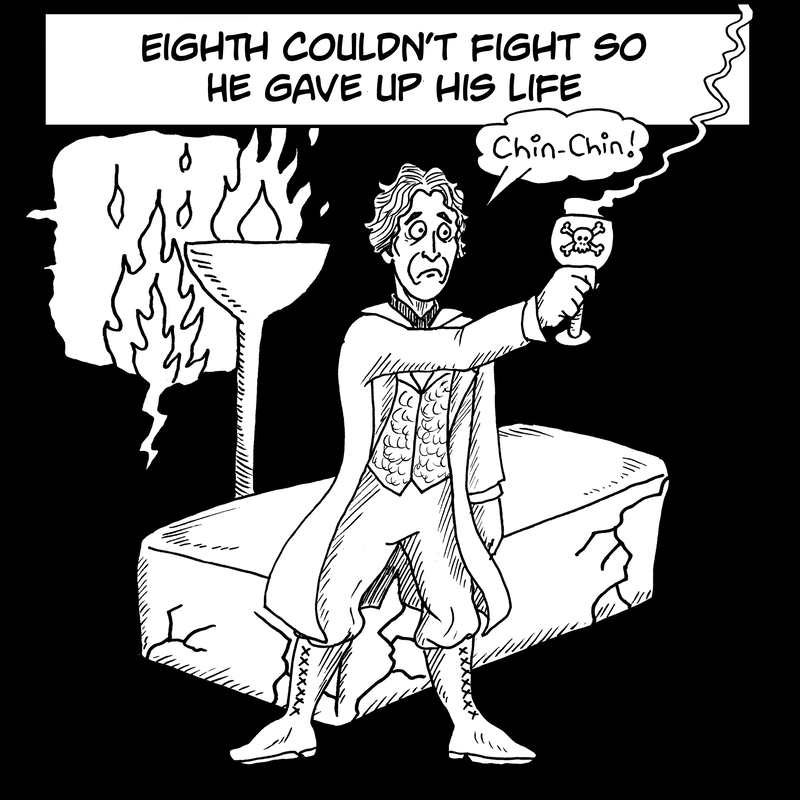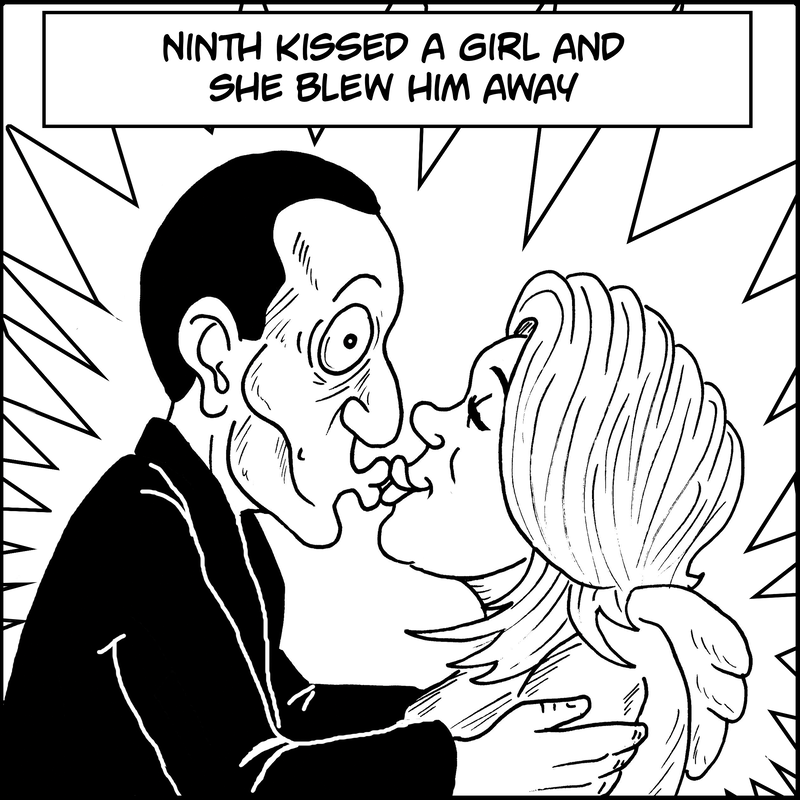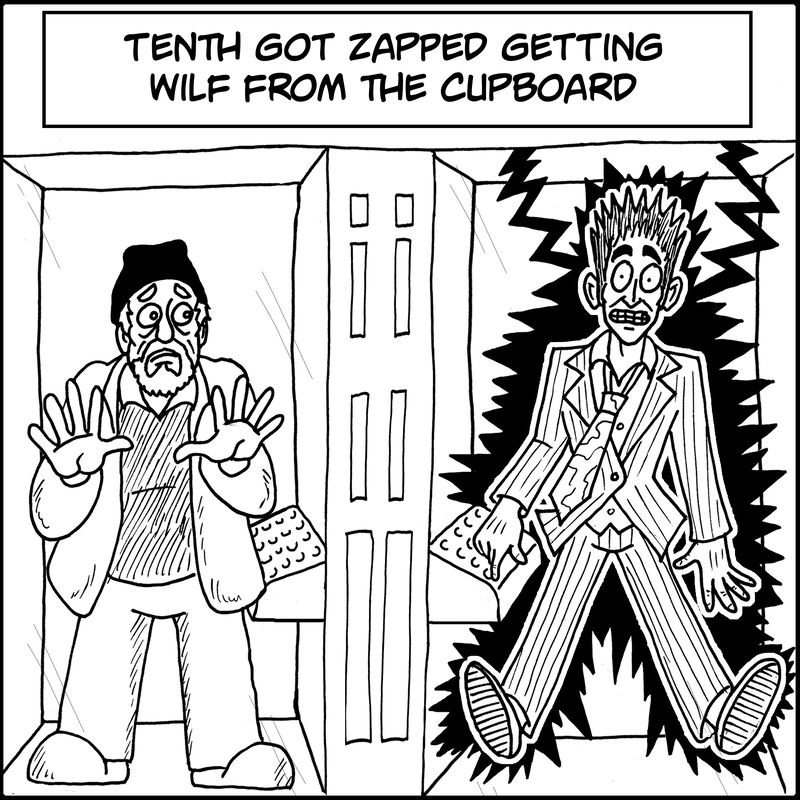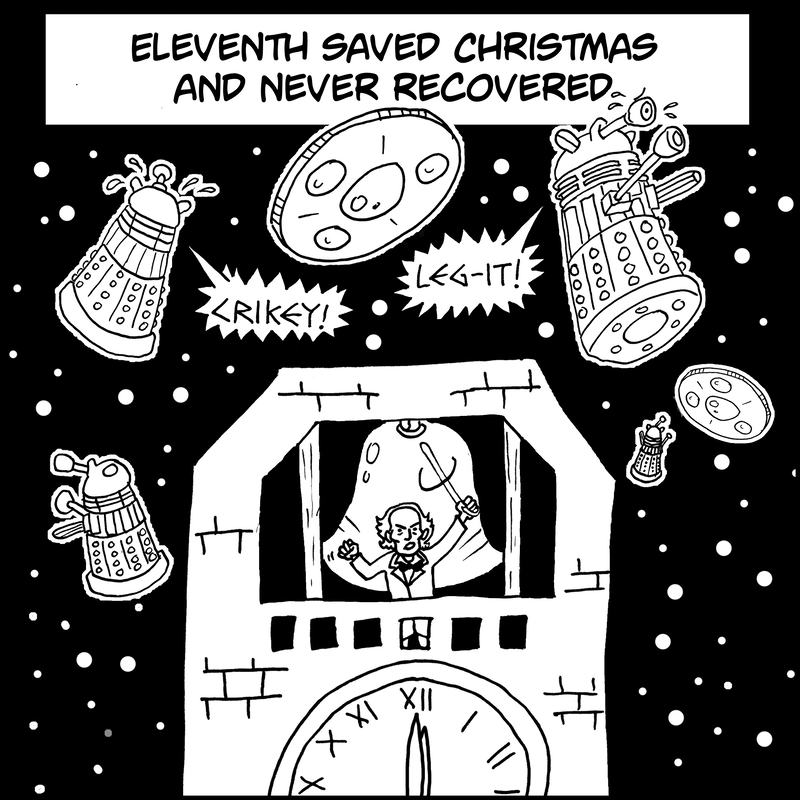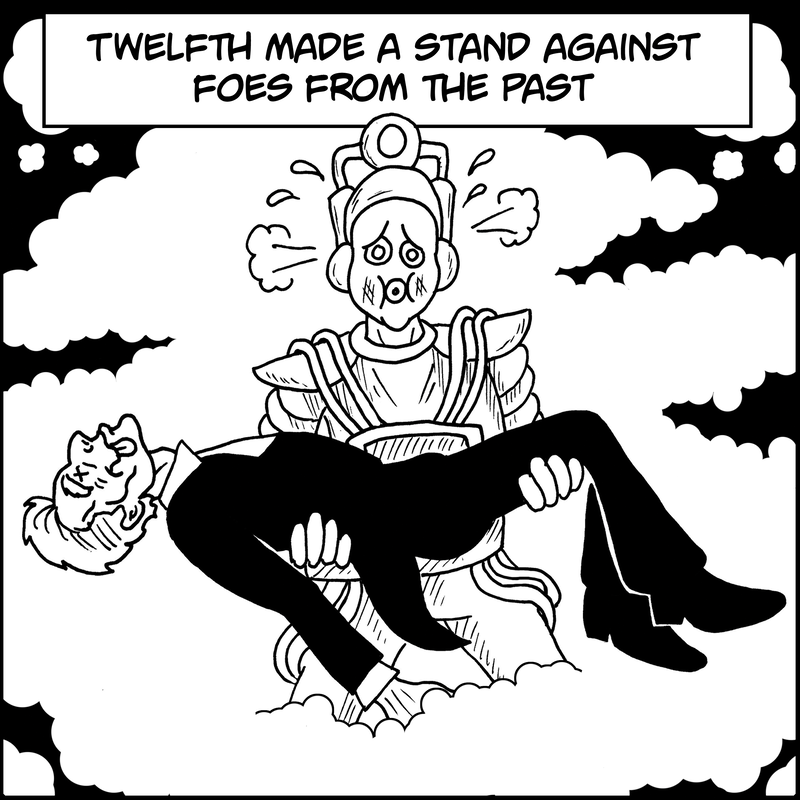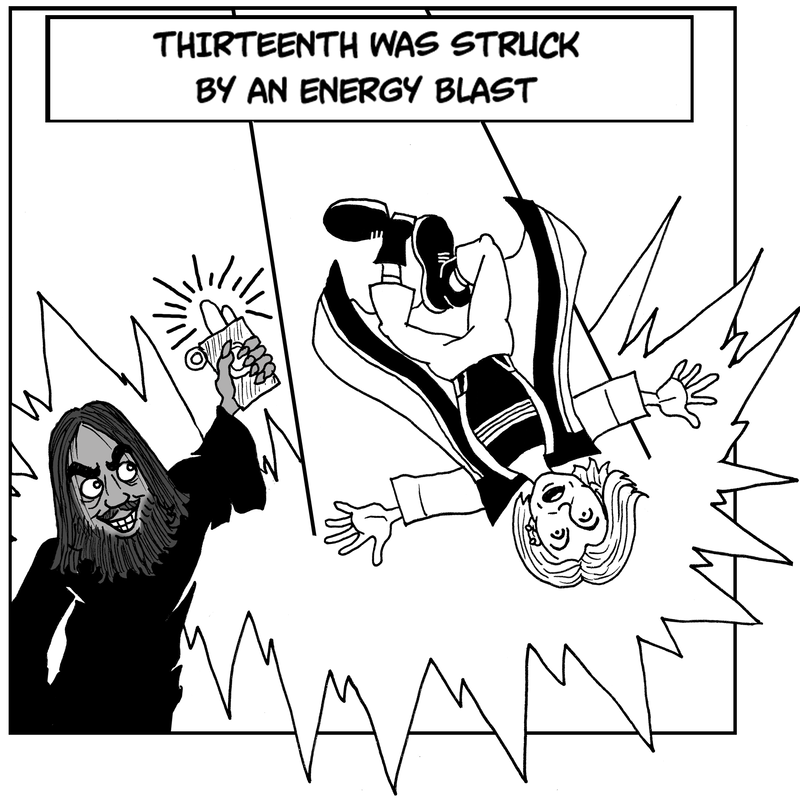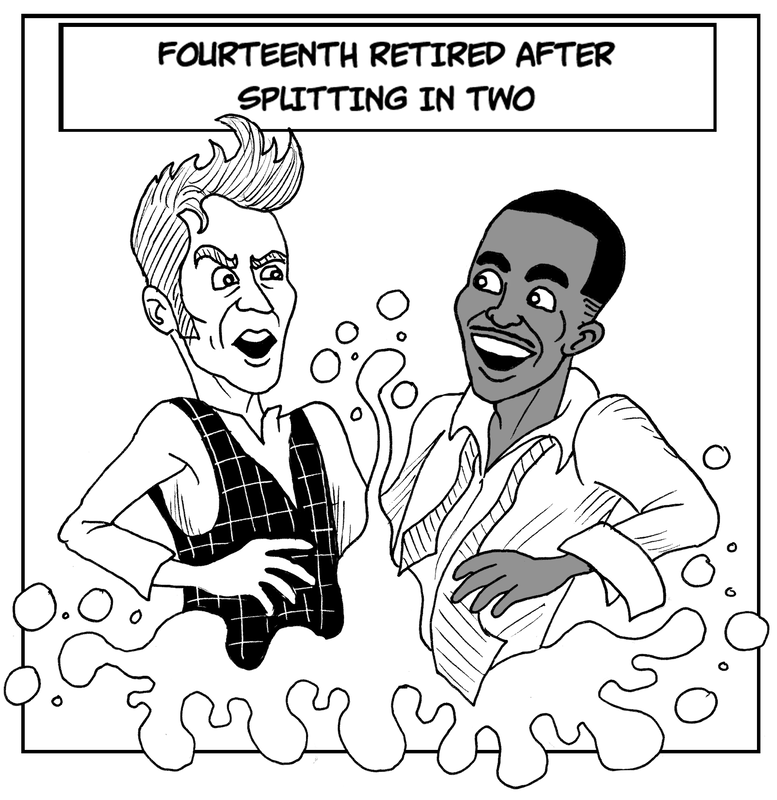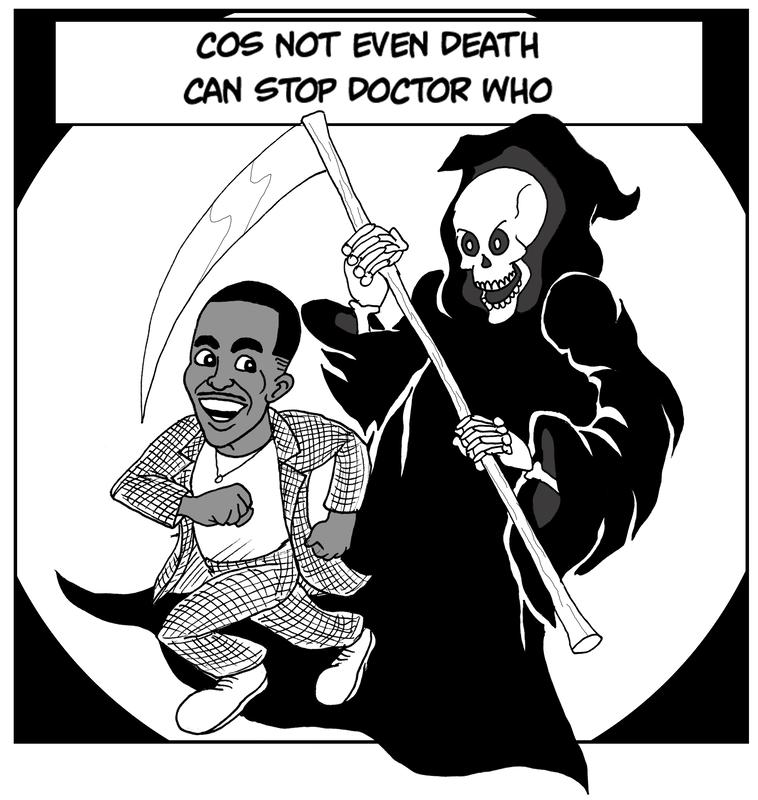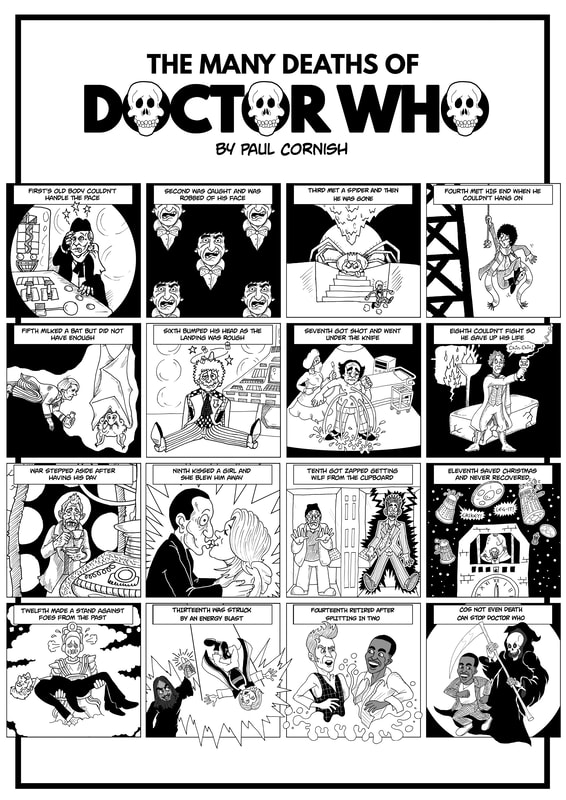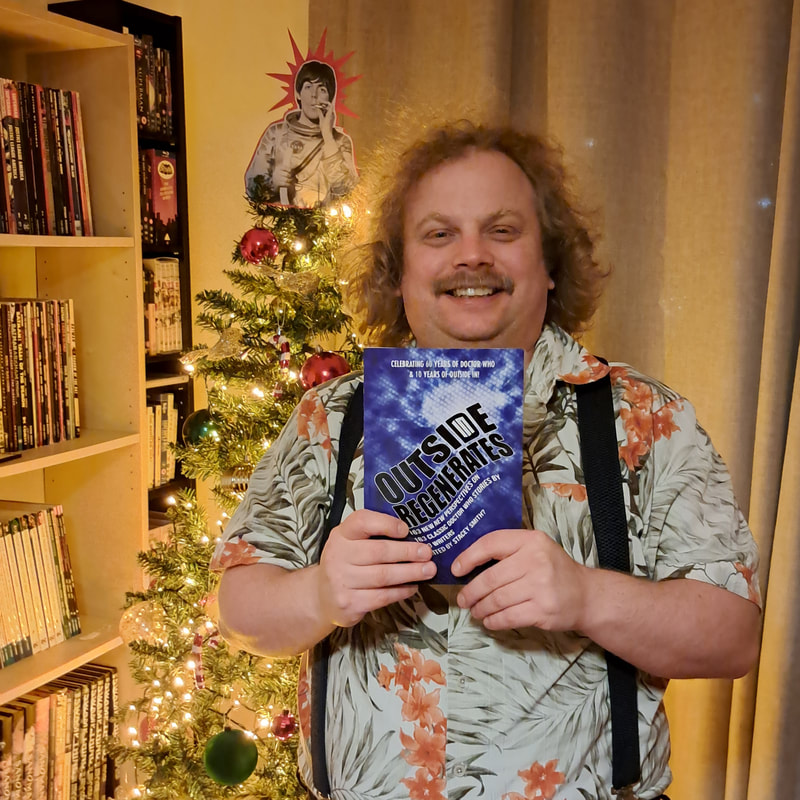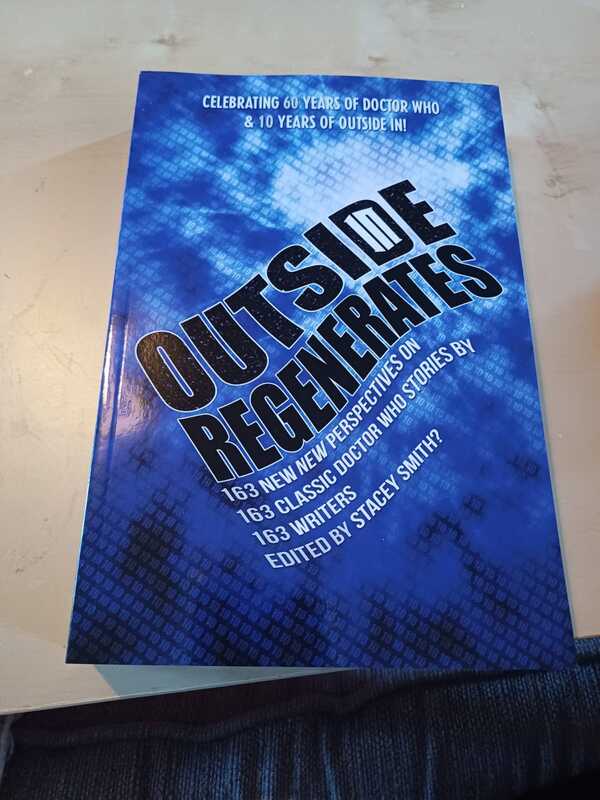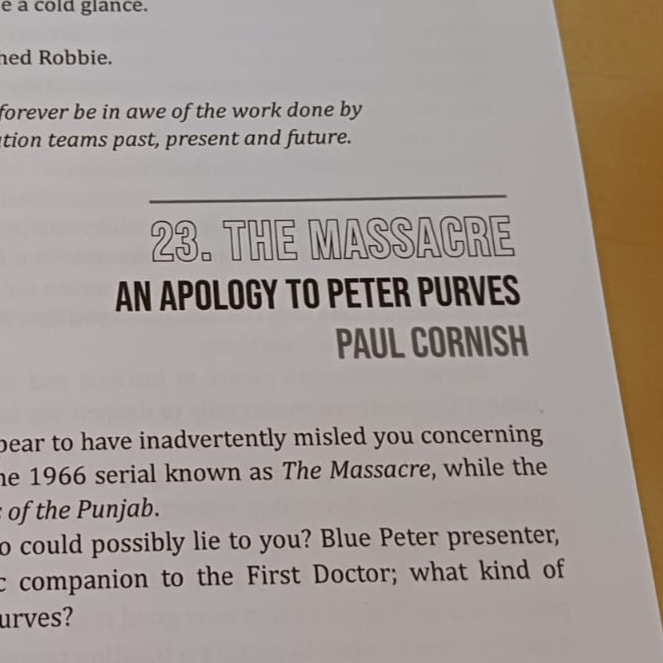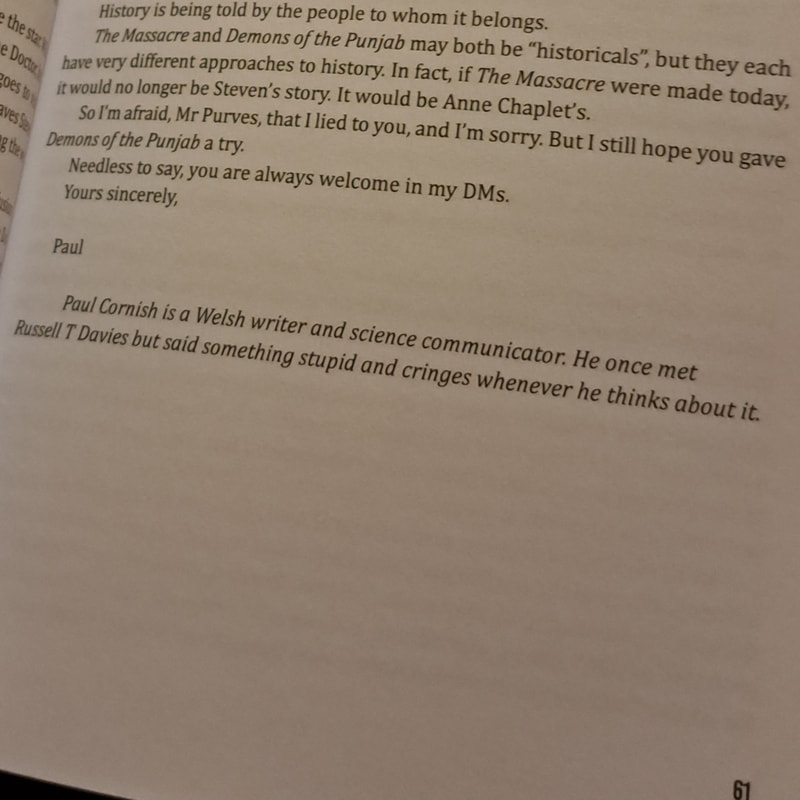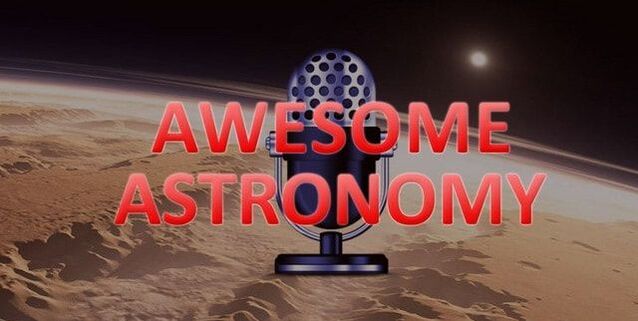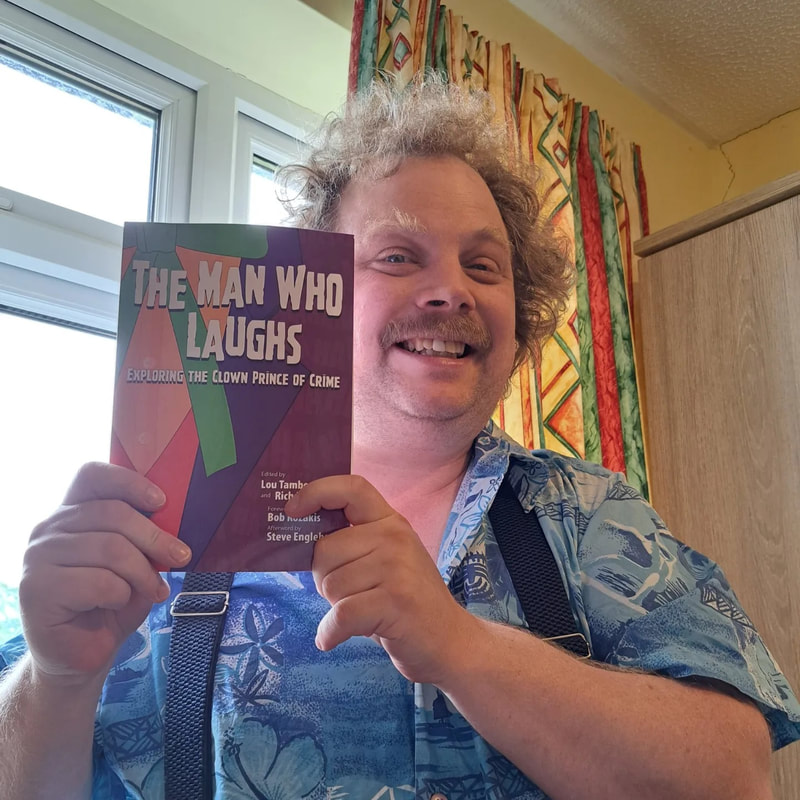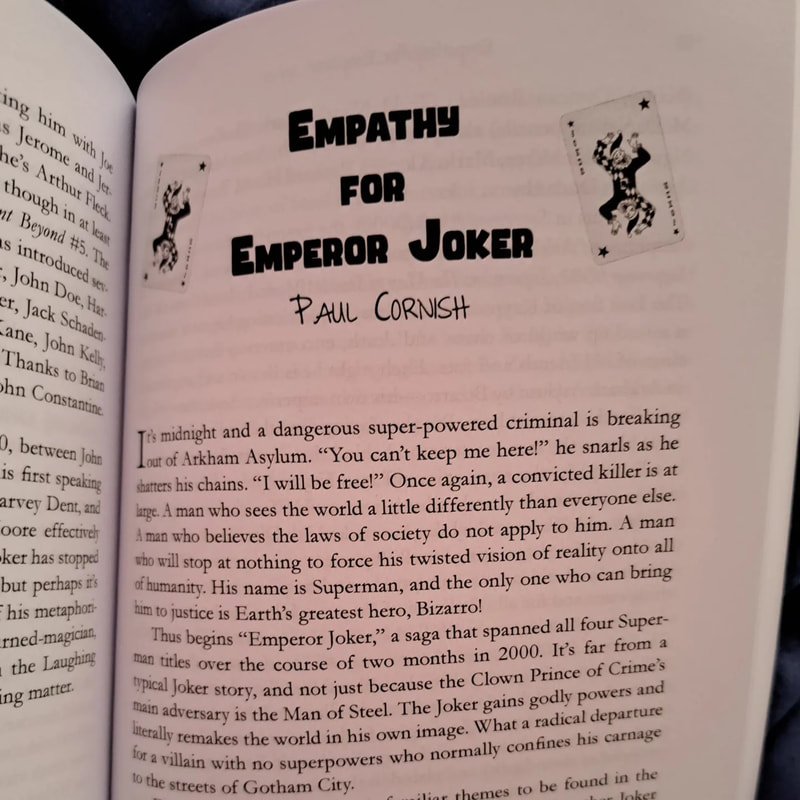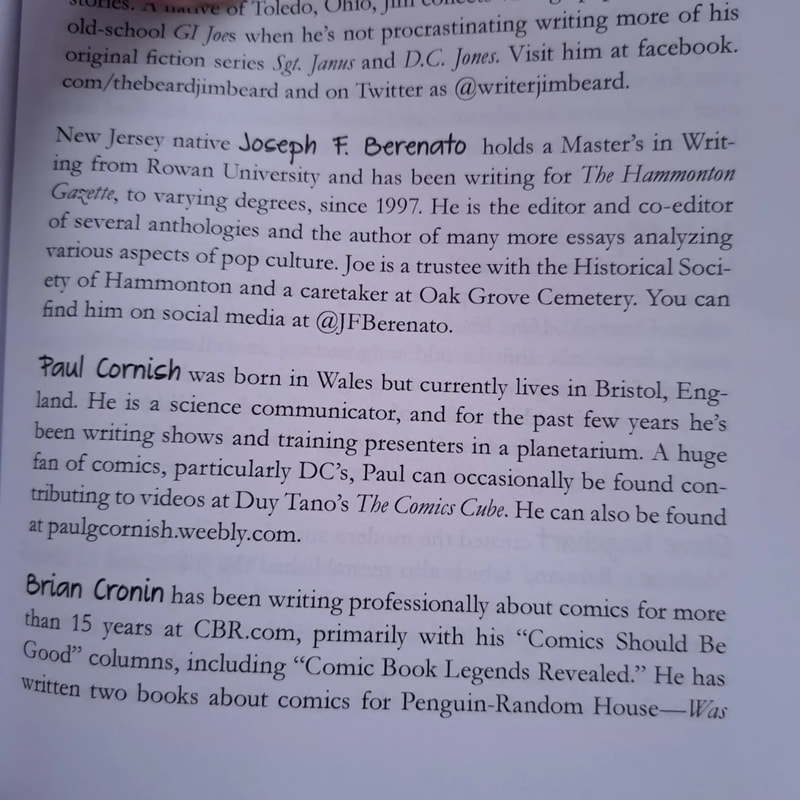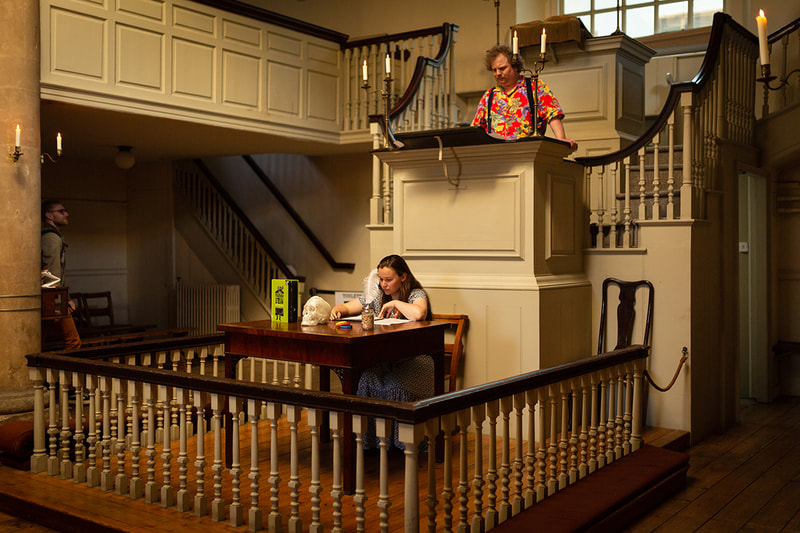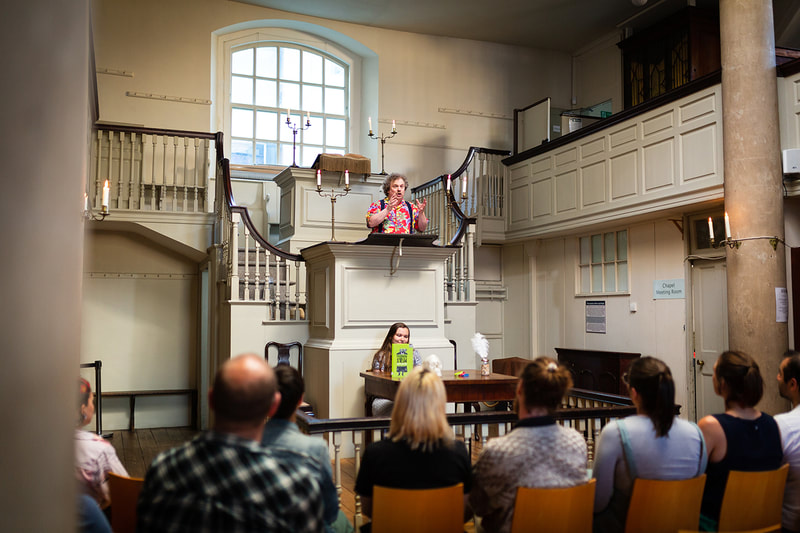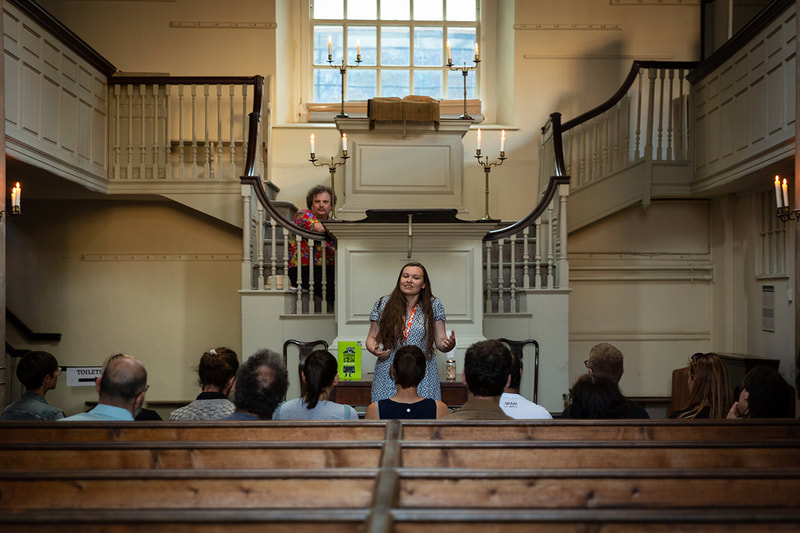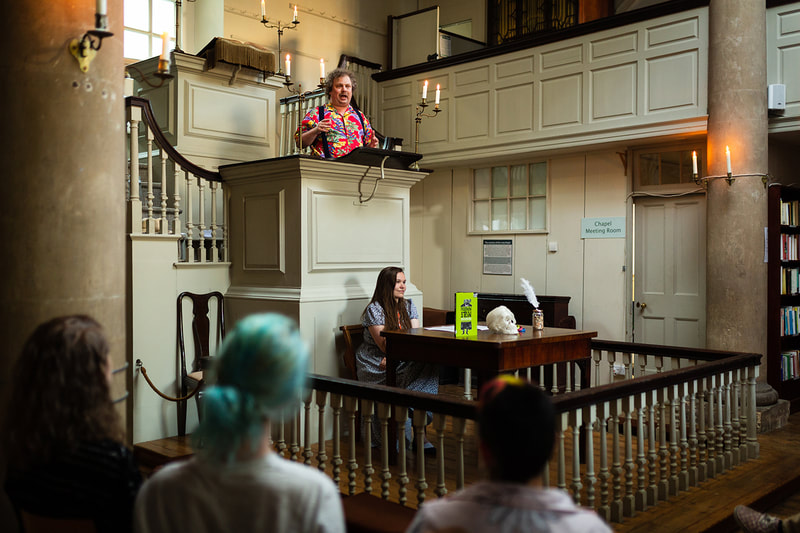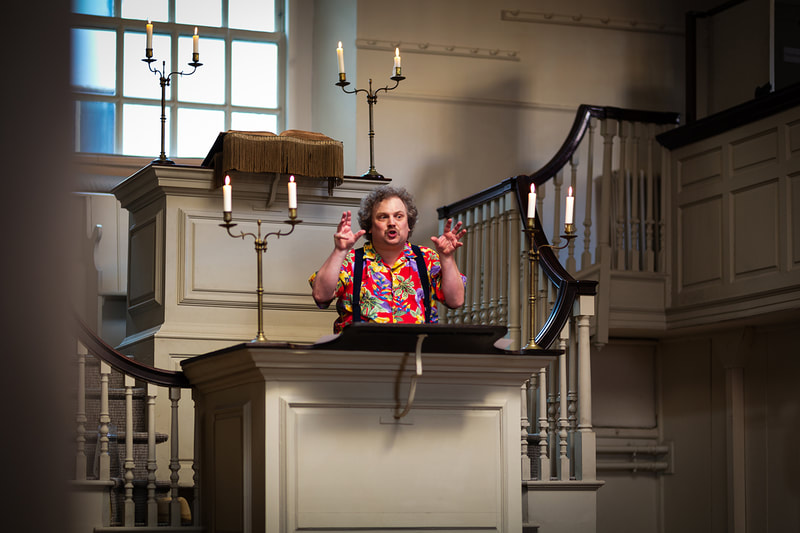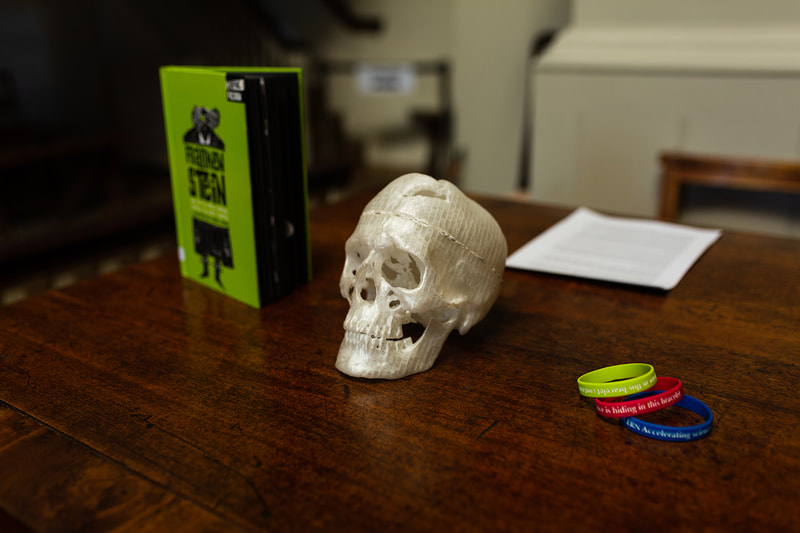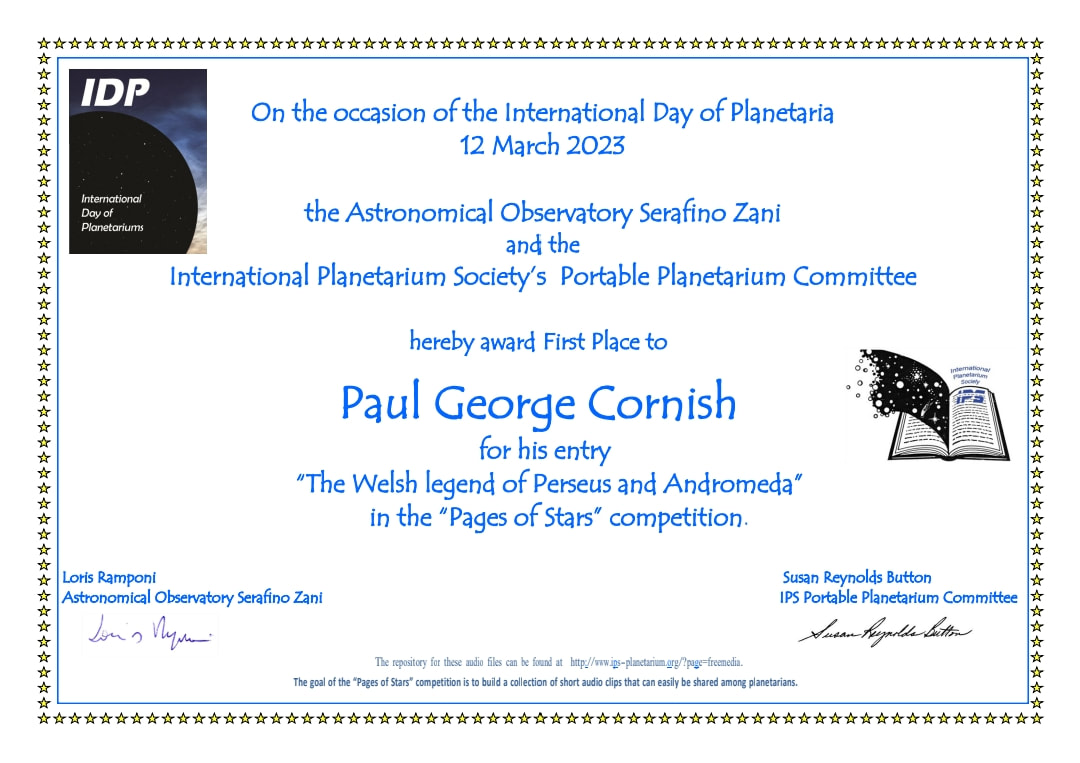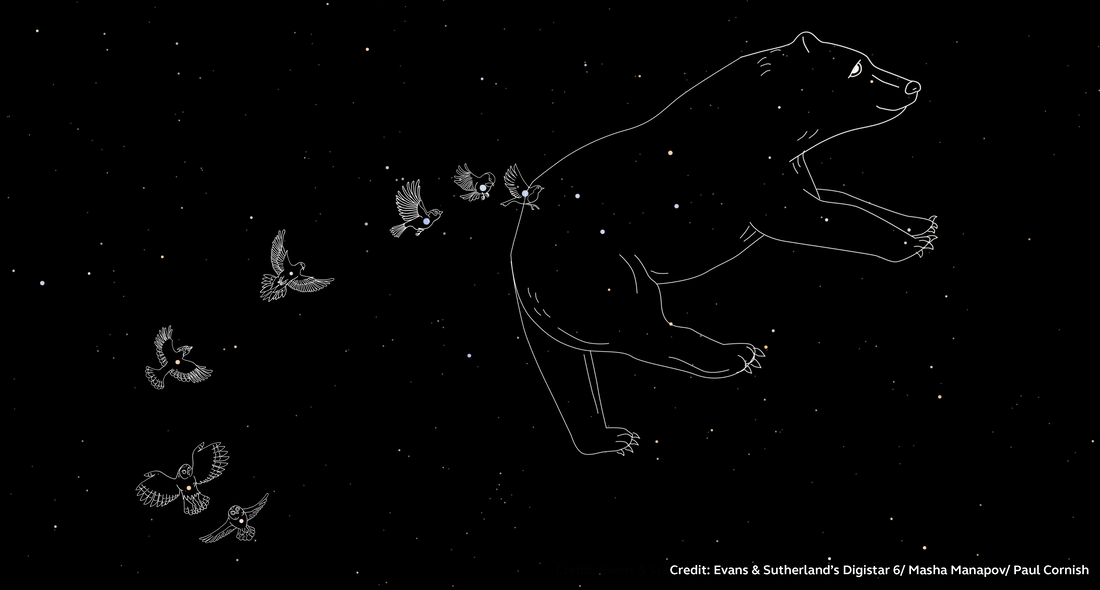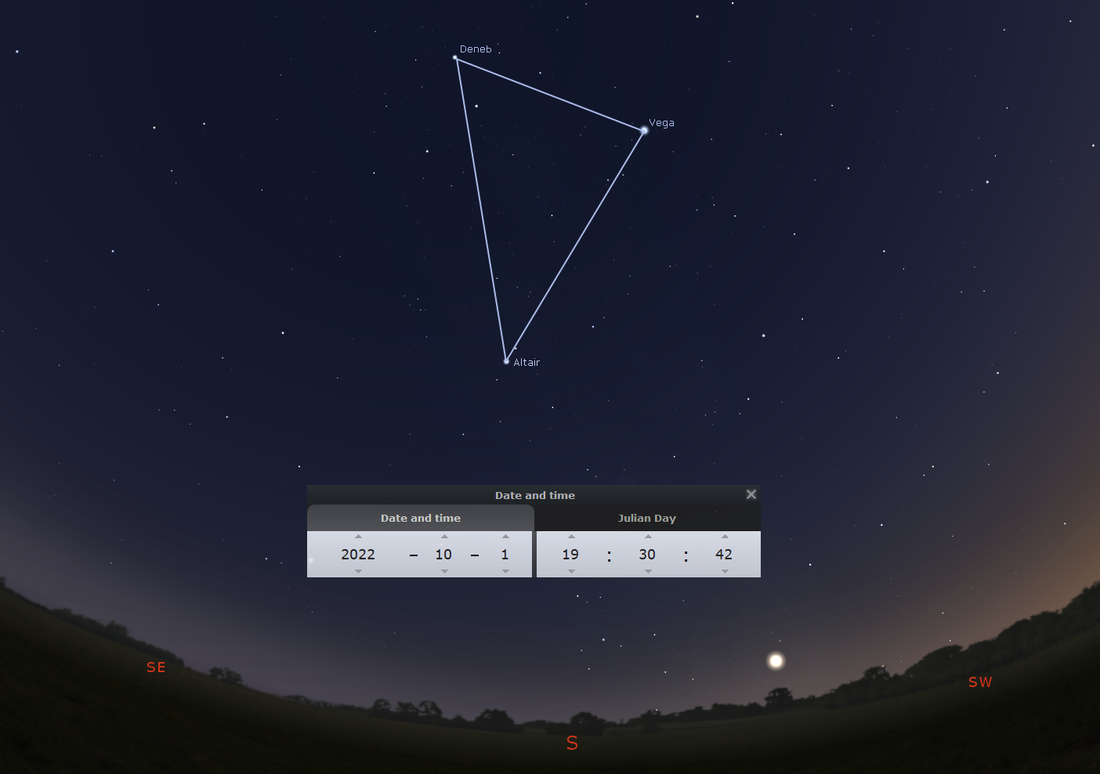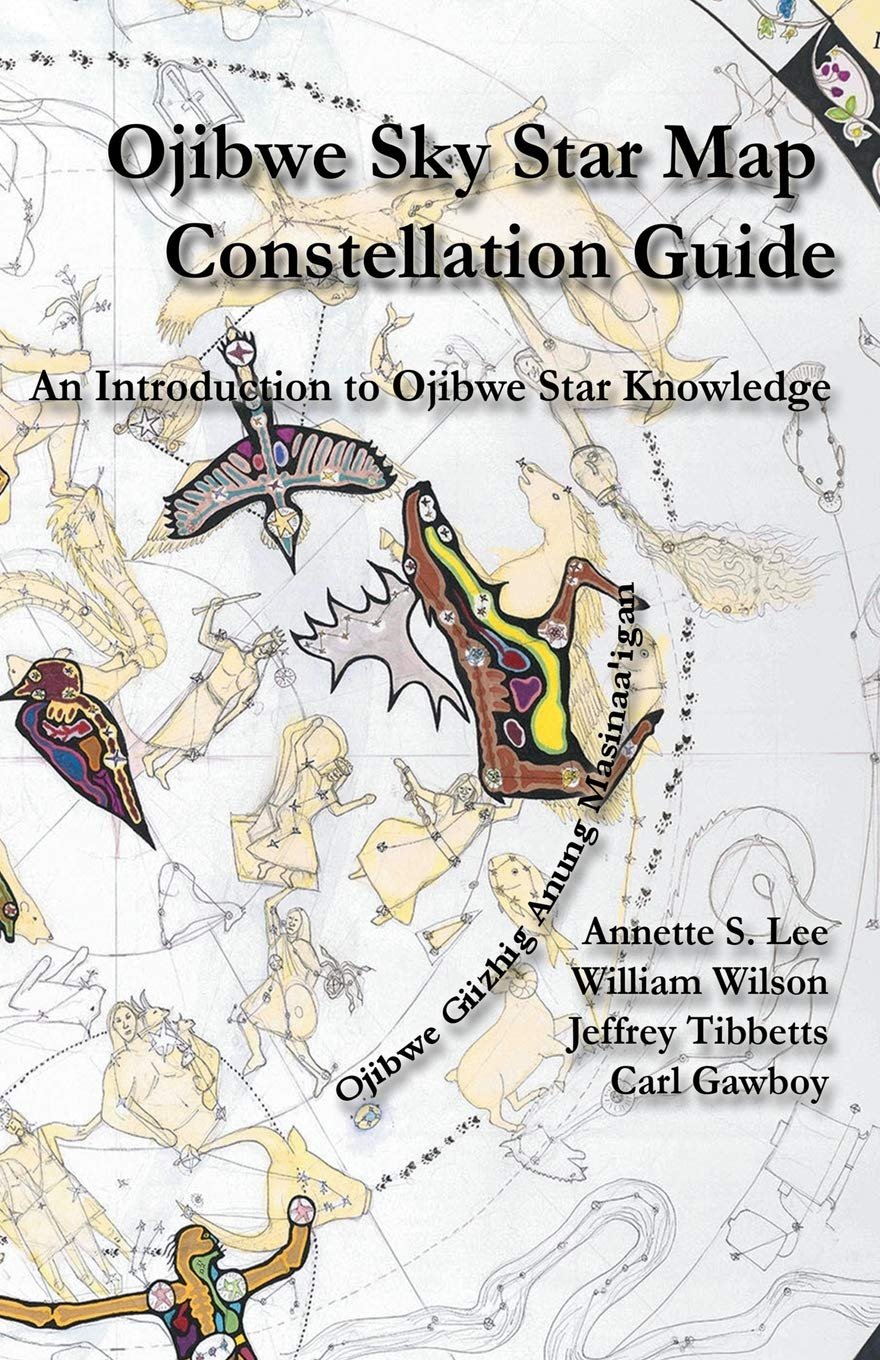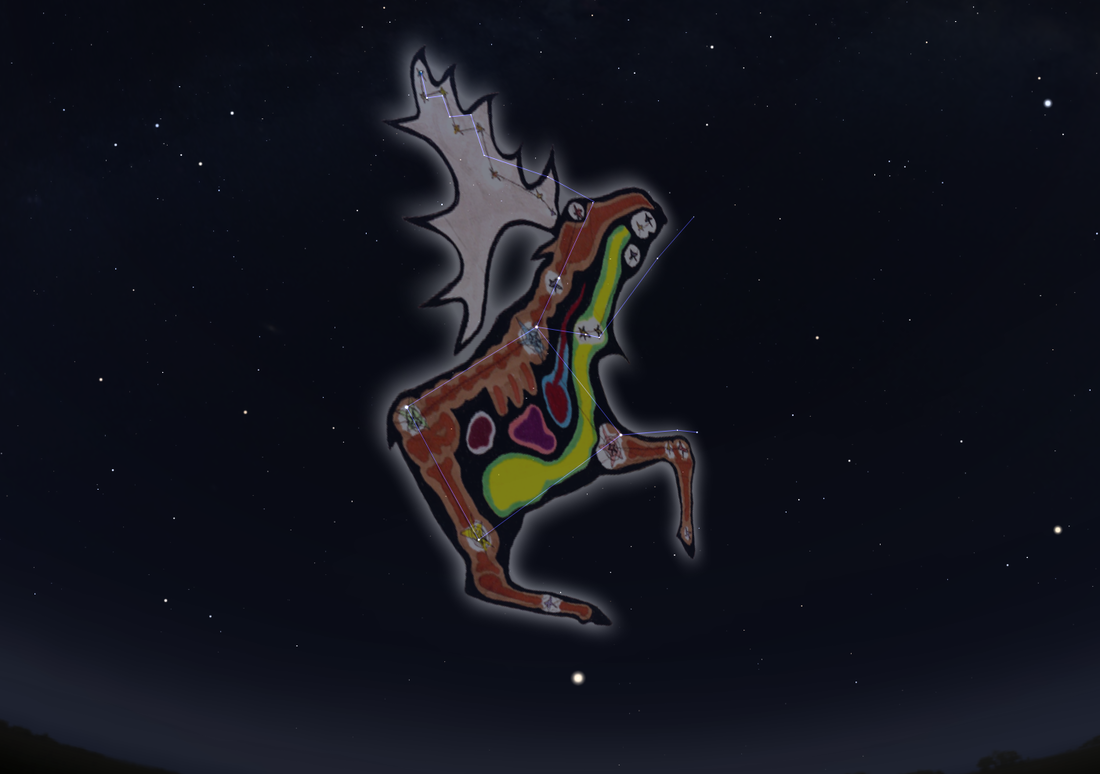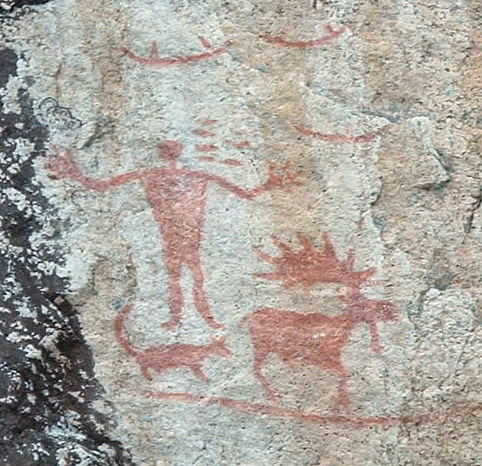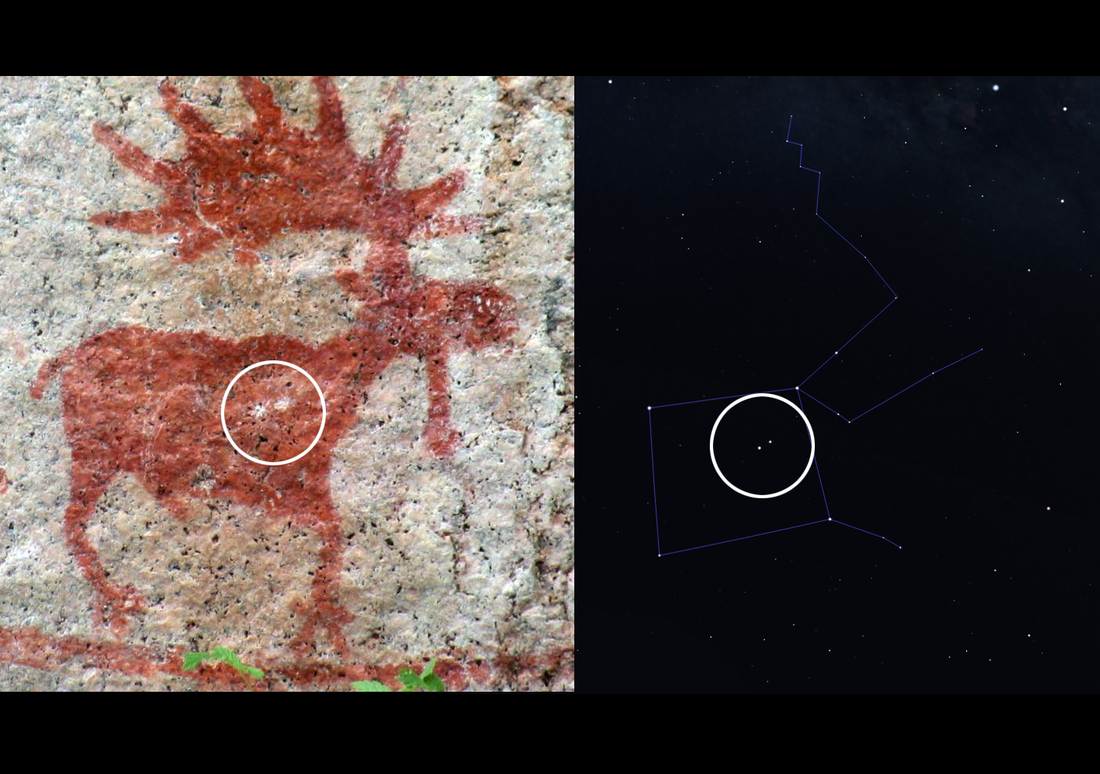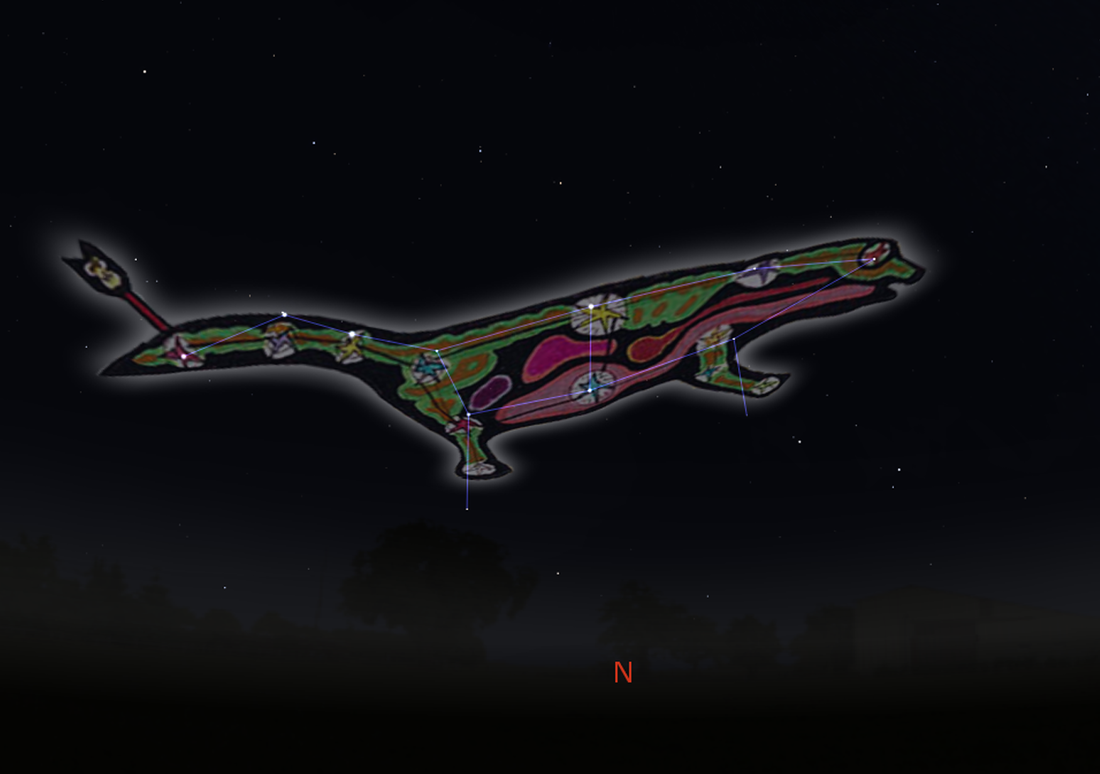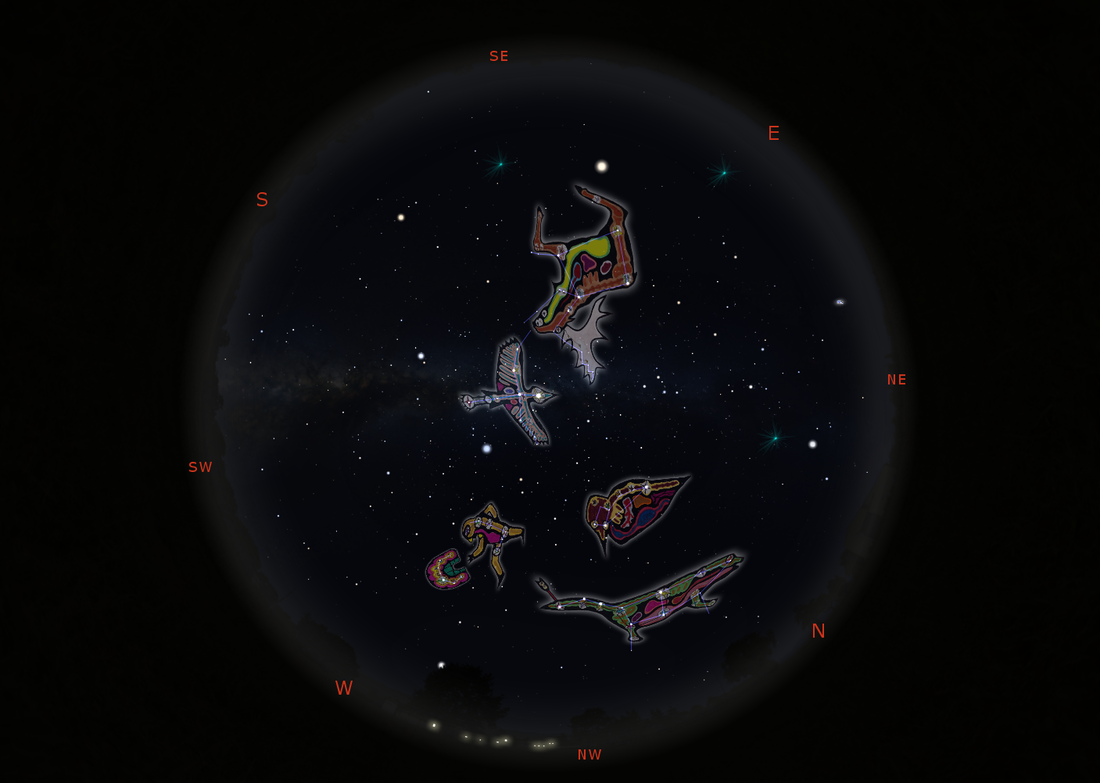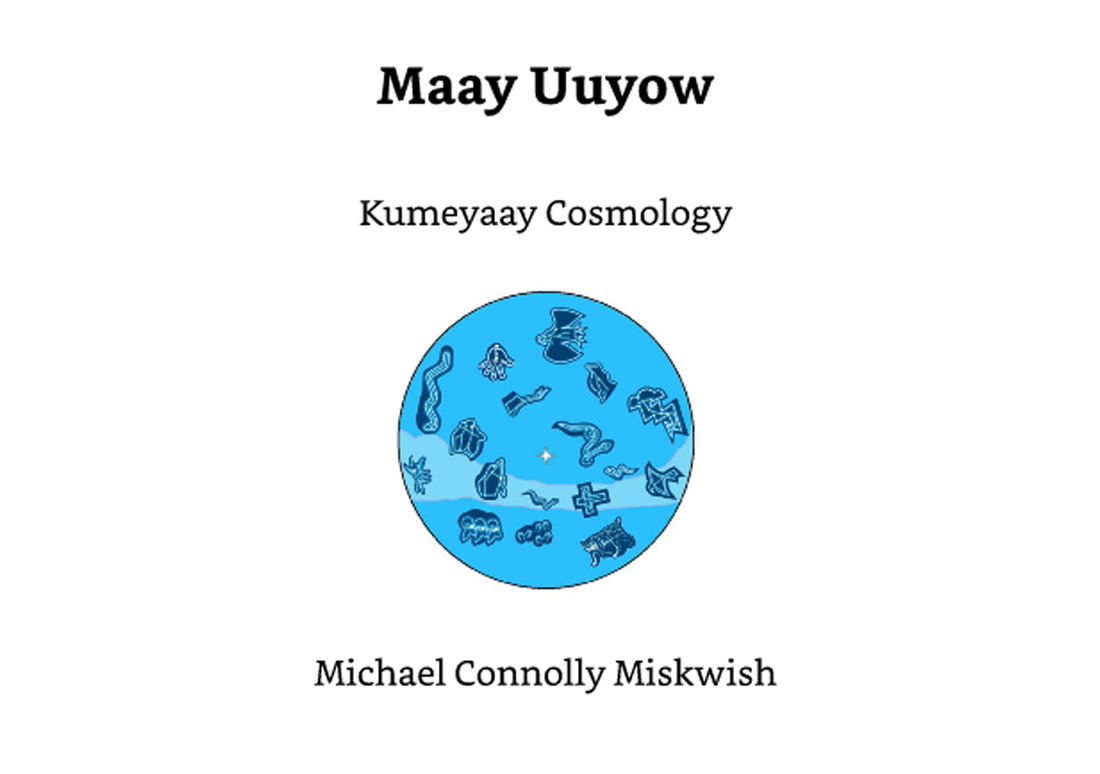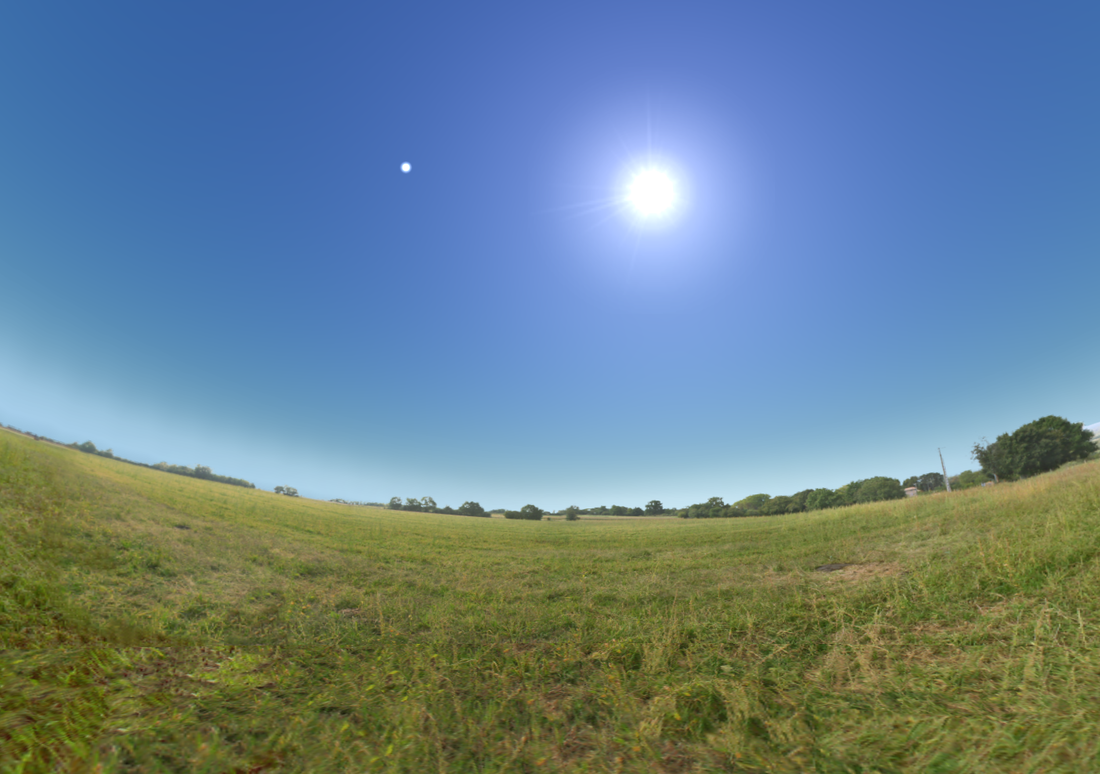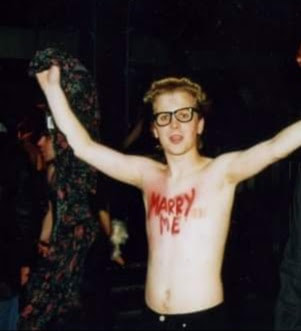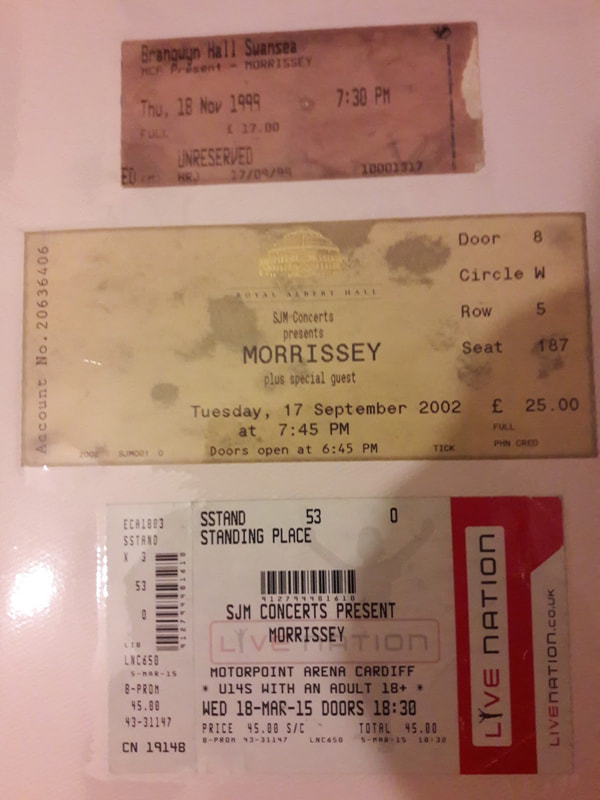PAUL CORNISH
Paul Cornish
Outside In Regenerates: 163 New New Perspectives on 163 Classic Doctor Who Stories by 163 Writers12/11/2023 November 23rd 2023 was the 60th Anniversary of the greatest TV show ever made - Doctor Who. It was also the day that ATB Publishing released their latest book, Outside In Regenerates: 163 New New Perspectives on 163 Classic Doctor Who stories by 163 Writers.
I'm very pleased to say that I am one of those 163 writers! The book was edited by Stacey Smith?, who encouraged all contributing writers to say "something different, something interesting, or something completely gonzo." I duly submitted a review of the 1966 story, The Massacre in the form of a tongue-in-cheek apology letter to the actor Peter Purves following an interaction we once had on Twitter. Stacey very kindly accepted my review, although I have no idea if Mr Purves has accepted my apology! I'm so grateful to Stacey for accepting my submission. It's a genuine thrill to have my work published alongside so many talented writers, including classic Doctor Who composer Dominic Glynn, Discontinuity Guide author Keith Topping, and my friend, Rich Handley. This is the second of my essays to get published in an actual book this year and it's very exciting. I'm looking forward to doing lots more writing in 2024.
Recently, I had the honour of being invited to speak to Dr. Jeni Millard on the Awesome Astronomy Podcast.
Awesome Astronomy is a podcast that "explores the frontiers of science, space and our evolving understanding of the universe." Together with Ralph Wilkins and Paul Hill, Dr. Millard creates "informative and fun astronomy programmes dedicated to space and astronomy news and monthly podcast extras covering hot topics and special interviews in the world of science and astronomy." For their latest episode, Dr Millard was kind enough to invite me on the show to discuss my career as a science communicator as well as constellation stories from different cultures. I was quite nervous and suffering from a bit of a cough when we recorded, but Dr. Millard put me at my ease straight away and I had a great experience. I was able to share some of the star stories I've learned over the years, including my favourite - the Welsh story of Perseus & Andromeda! I was very grateful to be invited as a guest on this wonderful podcast and I would encourage everyone to check it out. Their main site is here, and they can also be found on Apple and Spotify. Last year I was invited by Rich Handley and Lou Tambone to contribute to a book they were editing. This month that book has been published! The Man Who Laughs: Exploring the Clown Prince of Crime is a book of essays about DC Comics' super-villain, The Joker. As well as being edited by Lou Tambone and Rich Handley, it has a foreword by Bob Rozakis and an afterword by Steve Englehart, and features essays by Tom K. Mason, Michael Jan Friedman, Bobby Nash, Jim Beard, Brian Cronin, Duy Tano, Alan J. Porter, Valentina Rossi, Jo Duffy, Lou Tambone, Robert Greenberger, Rich Handley, Joseph F. Berenato, Kaz B. Towner, LaMarrison Forte, Keith R.A. DeCandido, John Trumbull, Glenn Hauman, Paul Kupperberg, and me! It's published by Crazy 8 Press. It's a real thrill to have my work published alongside such talented and accomplished people. Seeing my name among that of legendary comic book professionals like Kupperberg, Greenberger, Rozakis, Duffy, and Englehart is surreal! It's also an honour to be published alongside my good friends Duy Tano and LaMar Forte. Even if I wasn't in it I would be recommending this book. All the essays are excellent. Pretty much every interpretation of the Joker in every medium gets scrutinised from some very unexpected angles. I'm immensely grateful to Rich and Lou for asking me to contribute. I hope I did their fantastic project justice. I'm hoping to do more of this kind of work in the future. In the meantime though, you can buy The Man Who Laughs in print and on Kindle at the following link. Buy it on Amazon here. Also, check out the video below. It features some of the contributors to this book discussing the Joker in depth. The video is part of Duy Tano's The Comics Cube. Duy is well worth a follow on Youtube and/or Spotify. He regularly interviews some of the biggest and best names in comics and discusses and reviews all kinds of amazing comic books. Some of these discussions feature me, but don't let that put you off. I am after all, a published writer now. This performance of Stories from the Soul by Gemma Kerr & Paul Cornish was recorded at John Wesley's New Room, Bristol on the 29th June 2023.
While we never intended to make a professional level, high quality film of the show, we still wanted to keep some sort of visual record of it. Less than a minute or so of our introduction was not recorded and the audience have been blurred out, but it is an otherwise complete performance. Stories from the Soul was an hour of storytelling themed around the soul written by myself and my friend Gemma Kerr for We the Curious. The stories were taken from science, history, and mythology and themed around the soul. We performed it on four Thursday evenings in June 2023 at John Wesley's New Room in Bristol. Stories from the Soul6/17/2023 Photos by Lisa Whiting Recently my friend Gemma Kerr and I have been working on a new storytelling show for We the Curious. We felt the 'Stories from the Stars' shows we held on top of Brandon Hill in Bristol during the Winter had gone well, and we wanted to come up with a Summer alternative.
Together we wrote 'Stories from the Soul', an hour of stories about the soul from science, history, and mythology. We really wanted to give this show a nice balance of science and cultural ideas. We wanted the science to be accurate, and we were careful not to present non-scientific ideas as science. But at the same time, we didn't want to present religious and cultural ideas as something that must kept separate from science at all costs. I'm very happy with what we've created. We explore dark matter, talking gorillas, journeys into the afterlife, umbrellas that come to life to lick unwanted guests, and much more. We're lucky enough to have John Wesley's New Room in Bristol as a venue - the oldest Methodist building in the world! Gemma and I have already performed our show twice so far, and we have two more performances to go. I'm looking forward to them both immensely. If you're in Bristol and this sounds like your sort of thing, check out the details at the link below. Stories from the Soul | We The Curious Pages of Stars Competition3/18/2023 In December last year I entered The Astronomical Observatory Serafino Zani and the Mobile Planetarium Committee's Pages of Stars competition. The competition was hosted on the International Planetarium Society's website with the goal of building "a collection of short audio clips that can easily be shared among planetarians." Those who entered the competition were invited to prepare a short text that can be read under a Planetarium dome, and record themselves reading it aloud.
I'm delighted to say that I've won first prize. I've been awarded a certificate, and my recording and accompanying text have been made available on the International Planetarium Society's website. The text has also been published in the latest issue of the Society's professional journal, The Planetarian. Needless to say I'm very pleased to have won. My text was a retelling of the story of Lleu Llaw Gyffes and Blodeuwedd from the Mabinogi. In Wales this story has been linked to the constellations Perseus and Andromeda. It's wonderful to have an opportunity to share a little bit of Welsh culture - not to mention one of my favourite stories - with fellow Planetarium presenters across the world. The story is one I've made great use of over the years while performing Planetarium shows. Recently I've been sharing it as part of We the Curious' outdoor Stories from the Stars events. These events were written and presented by myself and my colleague Gemma Kerr. Gemma also hosts a fantastic podcast about astronomy and mythology called The Celestial Tales, which I thoroughly recommend. I originally found the link between the story of Lleu and the constellations being made in an excellent book by the Welsh astronomer Martin Griffiths - Dark Land, Dark Skies. I would urge any stargazers with an interest in mythology to read this book. This is a transcript of a talk delivered at the British Association of Planetaria Conference 2nd September 2022. It was also broadcast online to attendees of the Presenter Network Conference. I’d like to begin with a story told by the Mi'kmaq of North America and Canada. It’s the story of Ursa Major, the great bear. The Mi’kmaq know this constellation as Muin, the Celestial Bear. The story of Muin begins each spring - in the month of March - and continues until October. Muin is standing in the night sky, having just come from her den. If you look up on a clear night, just after the sun sets, you can see the shape of the bear being chased by three other stars. These are the first of the seven hunters that chase Muin across the sky each year. The first hunter to see Muin is always Chickadee. After the long, cold winter he is very hungry and decides that Muin will provide a great feast. Chickadee is very small and asks some of his bird friends for help! First, Chickadee invites Robin and Gray Jay to join the hunt. They agree and join Chickadee behind Muin. These three birds are very small and so they decide they should invite more hunters to help in the chase. First, they invite Pigeon. Then Blue Jay. Then Barred Owl. And finally, Saw-whet Owl - and the chase begins! Muin moves along the horizon with the birds lined up behind her. As the summer goes on, Muin begins to tire and the small birds, Robin, Chickadee, and Grey Jay are beginning to gain on her. The larger birds, Pigeon, Blue Jay, Barred Owl, and Saw-Whet Owl start to fall behind and lose the trail. As autumn approaches Muin begins to turn upside-down in the night sky. The first three birds, Robin, Chickadee and Grey Jay, are almost close enough to strike, but the other four have almost completely lost track of the hunt and will soon begin to disappear beneath the horizon. October marks the end of the hunt. The larger birds have now completely lost the trail. First to disappear over the horizon are Barred Owl and Saw-whet Owl. Finally, Blue Jay and Pigeon also lose the trail, leaving only the three small birds, the hunters that are always hunting. Robin is the first bird to catch up with Muin. He kills her with an arrow and is so hungry after the long chase that he jumps onto the bear and begins to prepare the feast. This causes Robin to be covered in Muin’s blood! Robin flies to the nearest maple in the sky-land and shakes to get clean, the blood lands far and wide onto the leaves of maple trees below, turning them red each autumn. Robin cannot get the red blood off his breast and Chickadee tells him “that will be there as long as your name is Robin!”. As Chickadee and Robin prepare the feast, Gray Jay waits until the work is done before arriving. He is so pleased to avoid the work that he never hunts again. Instead, he always follows the hunters and then enjoys the meat of their hunt. This is how he got his Mi’kmaq name, which means ‘He-who-comes-in-at-the-last-moment’. Chickadee and Robin are generous, though. They allow Gray Jay to share the meat and they all dance around the pot as Chickadee stirs the meat! And so, the story ends. As autumn turns into winter and then into spring, the cycle will start all over again with Muin’s spirit entering a new she-bear each March, coming out of her den to be hunted by the birds throughout the summer. In this way life is passed from generation to generation without end. Over the past few years, I’ve been doing some research into Native American and Indigenous star stories like this one for our live Planetarium shows at We the Curious. I’d like to share some of what I’ve learned with you, BUT I’d like to emphasise that I’m no expert. The purpose of this talk is to discuss the importance of hearing the stories from the storytellers to whom they belong. I’ll share all my sources at the end of the talk, and I encourage you to check them out if this topic interests you. Researching Spring Stargazing I was taught a version of Muin’s story years ago while presenting in the Planetarium in Techniquest, Cardiff. I wanted to use it in our Spring Stargazing show at We the Curious but decided to try and verify its authenticity first. After a bit of Googling, I decided to email the Nova Scotia Museum. The Mi’kmaq Cultural Heritage Curator, Roger J. Lewis got back to me. He was kind enough to share the story I told at the start. He shared a written account and a video of the story being told by a Mi’kmaq elder. From the video I learned that the story should be told in the present tense because it’s always happening. Roger Lewis also shared some advice: “I would suggest that (the story) not be trivialized and (you should) reinforce that stories similar to this one are used for teaching purposes in a culture based on oral narratives.” We included this story in our Spring show – renamed The Ever-changing Sky - and it seems to have gone down well with both presenters and audience. As a result, I decided to find some Native American and Indigenous stories for our Summer Stargazing show – now called Colossal Cosmos. The Summer Triangle Muin’s story wasn’t the only tale I learned at Techniquest. I was also told a story about the Summer Triangle that always stayed with me. Image credit: Stellarium Once again, I went searching for a way to verify its authenticity. I found a version of it on a website called starlab.com that offers lesson plans built around Native American stories for inflatable domes. According to this story the Summer Triangle is actually a giant hand. “The Deneb-Vega line represented the curled fingers and fist, and Altair the tip of the pointing index finger of the Great Manitou or Great Spirit. When this hand pointed directly south early in the evening, it was time to start travelling south, for cold weather was on its way” Unfortunately, I couldn’t find any other examples of this story anywhere. This article on starlab.com was by a lady named Doris Forror who seems to have retired. I couldn’t find any recent contact details or any information about her other than the fact that she once worked at a Planetarium in Ohio. I didn’t feel that this was enough to verify the authenticity of this story. I contacted Starlab but these days they are an equipment vendor and nobody working there now has any knowledge of these old lesson plans. But through them I was put in touch with an astronomer and Earth scientist named Chris Vaughan. He directed me to the work of Annette S. Lee – an astrophysicist and artist. Lee is mixed-race Lakota and she is the director of Native Skywatchers, a program created to record, map, and share Indigenous star knowledge. The website for this program – nativeskywatchers.com is fantastic. It contains recordings of talks and seminars given by astronomers, scientists, and indigenous cultural experts. Lee says on the website that the “overarching goal of Native Skywatchers is to communicate the knowledge that indigenous people traditionally practiced a sustainable way of living and sustainable engineering through a living and participatory relationship with the above and below, sky and Earth.” Carl Gawboy is one of the co-founders of nativeskywatchers.com. He’s a member of the Ojibwe and a painter. I recommend the book he and Lee have written about Ojibwe constellations. In one of the videos on the website, Gawboy gives a lovely example of the relationship between the sky and the Earth that Lee refers to - the Ojibwe story of the Great Moose. Image credit: Stellarium/ William Wilson The moose is very important to the Ojibwe. They provide food and clothing for the people. You may recognise the Great Moose as Pegasus and his antlers as Lacerta the lizard. The Great Moose constellation gains power as it rises throughout the Summer and loses power as it descends in the Winter. This reflects what happens with actual, real-life moose. They are powerful and aggressive throughout Summer, which is the best time to hunt them. Throughout the Winter they are weaker and skinnier, and their antlers fall off. This is not a good time to hunt them. Image credit: Etphonehome, CC BY-SA 3.0, via Wikimedia Commons At Hegman Lake in Minnesota there are Native American pictographs on the rocks that are thought to be between 500 and 1000 years old. One of them depicts a moose. Gawboy has argued that this is a painting of the Great Moose constellation – he was the first person to make this connection. Image credit: Stellarium He points out that the moose is a square-ish shape and has two blank spots on its chest that correspond with two stars that lie within the square of Pegasus in that exact spot. There’s another Ojibwe story that I like very much, and like the Mi'kmaq story I told, it’s about Ursa Major. The Ojibwe see this constellation not as a bear but as a fisher, which is a sort of North American weasel. Image credit: Stellarium/ William Wilson Fisher and his friends were hunting for food. The hunt had lasted for weeks, and it was snowy and cold. Fisher and his friends sent Wolverine up a giant pine tree to the sky-world to see why Spring was taking so long to come. He was gone for many days, but finally he returned. Wolverine reported that a giant ogre was keeping all the birds trapped in birch bark baskets, preventing the Spring from coming. The baskets were guarded by the ogre’s brothers. “We must kill him and free the birds!” said Fisher, picking up his bow, arrows, and knife. Fisher climbed the giant pine tree and jumped through an opening in the sky. He found himself in warm world full of flowers. He soon arrived at the ogres’ encampment where he was confronted by the ogre’s two brothers. Fisher was quick and he darted between their legs, freeing the birds from their baskets. The sky was black with the escaping birds as they all flew towards the opening into our world. They all passed through the opening in a great tornado of wings. The ogre and his brothers were furious, but once again Fisher was quick. He dashed between their legs and back to the opening. As he fell through the opening, he saw our Earth below him changing from white to brown to green – the Spring had finally come! Down Fisher fell towards the ground, the ogres’ arrows whizzing all around him. He landed on soft mossy ground but knew the ogres were close behind. He dodged their arrows as best he could, but he couldn’t shake them off his trail. Thinking he could fool them by going back up the pine tree and then doubling back, Fisher climbed the tree once again. The ogre and his brothers spotted Fisher and fired their arrows. From the tree Fisher leapt to the North but was struck by an arrow! Fisher was pinned to the sky by his tail and left to go around and around – where he remains to this day. But Fisher’s efforts were not in vain. Now that the birds were free the ogres’ lost their power over our world. They went back up the pine tree and never bothered our world ever again. Image credit: Stellarium/ William Wilson The illustrations you’re seeing are by an Ojibwe artist called William Wilson. He painted these constellations in the traditional Ojibwe “X-Ray” style. In Wilson’s words we are seeing the pictures “as the spirits see us. They see right through.” These Ojibwe constellation images can be found on Stellarium. I’ve included a link at the end of this talk to a video of Carl Gawboy telling this story which is definitely worth watching. He tells the story a lot better than I do and the video features a lot more of Wilson’s artwork. Kumeyaay Nativeskywatchers.com is a fantastic source of stories and information, but I still couldn’t find anything matching Doris Forror’s story. I had also contacted the National Museum of the American Indian in the States and they put me in touch with Michael Conolly Miskwish of the Compo Band of the Kumeyaay Nation in the San Diego/ Baja California area. Mr Miskwish recommended his book to me on Kumeyaay cosmology - Maay Uuyow. In this book, Miskwish explains that the cosmological knowledge of the Kumeyaay was once extensive. It was, however, suppressed - along with other beliefs and cultural practices - by Spanish invaders in the 1700s. In his book, Miskwish has pieced together the cosmological knowledge of the Kumeyaay using anthropological research and what has survived through Kumeyaay oral tradition. Although I couldn’t find anything specifically about the Summer Triangle, there were stories about the constellations associated with the triangle, including this lovely one about Cygnus. Image credit: Stellarium Instead of a swan, the Kumeyaay see Pehkay - the cross. This cross is associated with the human spirit at the end of its life, travelling to the east, west, and north to collect its shadows. The spirit then heads south on a long journey to a high mountain that connects with the path to the Maay hetat kur, or the ‘spine of the sky’. This is the path to the next world! When it’s very dark we can see this path running through the Summer Triangle. It’s more commonly known as the Milky Way. We went on to include the Kumeyaay story of the cross in our Colossal Cosmos show, but you may be wondering - what about my hunt for the story of Great Manitou’s hand? Well, Doris Forror’s story remains elusive. It may well be an authentic Native American story - after all, these stories are passed down orally and so maybe that’s how it was passed to Doris Forror. But since I know so little about Doris Forror, I didn’t feel comfortable using the story in a show. However, while endeavouring to find a primary source for her story I heard many other incredible stories and was able to learn a bit more about cultures other than my own. It’s very easy to repeat a story you’ve heard on the internet but seeking out the actual original storytellers can be a much more rewarding and enriching process. I would encourage you not to repeat these stories as I’ve told them to you but to check out nativeskywatchers.com and have a read of the two books I mentioned and hear these stories being told by the people to whom they belong. I’d like to finish with one of my favourite Kumeyaay stories. It’s one I would never have known about had I not begun my search for an authentic source for Doris Forror’s story. It’s a children’s story from Mr Miskwish’s book that was told to him by Stan Rodriguez, a Kumeyaay teacher who learned the culture from his grandmother and other Kumeyaay elders. The Sun and the Moon were getting married. They invited all the animals to a ceremony on top of Kuchumaa mountain. All the animals rushed up the mountain, except for two frogs, who lagged behind and decided to stop at a pond to mate. Afterwards the frogs began to set off up the mountain, but the girl frog realised she was in distress. Her belly had swollen, and she insisted on returning to the water, where she gave birth to lots of little tadpoles. She said, “Look what happened when we mated!” “We’d better warn the Sun and Moon!” said the boy frog. They hopped off as fast as they could but when they reached the ceremony, the Sun and Moon were angry with them for their tardiness. “Where have you been?” demanded the Sun. “Stop the wedding!” said the frogs. “But we’re in love!” said the Sun and Moon. “But if you marry, you’ll mate!” said the frogs as they pointed towards the pond full of tadpoles “And then look what happens! You are both sacred. There is only one of each of you. But if you marry and mate, the sky will be filled with Suns and Moons!” So, the Sun and the Moon agreed that they would separate. The Moon would have the night-time and the Sun would have the daytime and each would sleep while the other was out. But sometimes, the Moon comes out to visit the Sun, and we can see it in the daytime. Sometimes the Moon even kisses the Sun in the daytime. This is called “enyaa wesaaw” and is also known as a Solar Eclipse. Any questions? Bibliography
Muin and the Seven Bird Hunters https://www.youtube.com/watch?v=3GBycod3qC0 Annette S. Lee, William Wilson, Jeffrey Tibbetts, Carl Gawboy ‘Ojibwe Sky Star Map - Constellation Guidebook: An Introduction to Ojibwe Star Knowledge’ https://www.amazon.co.uk/Ojibwe-Sky-Star-Map-Constellation/dp/0615986781 Michael Connolly Miskwish ‘Maay Uuyow: Kumeyaay Cosmology’ https://www.amazon.co.uk/Maay-Uuyow-Michael-Connolly-Miskwish-ebook/dp/B01MT2ZOXO/ Native Skywatchers www.nativeskywatchers.com The Great Moose https://www.nativeskywatchers.com/two-eyed-nasa-ojibwe.html Fisher https://vimeo.com/230360857 The Summer Triangle https://www.starlab.com/wp-content/uploads/2017/04/D.-9.-Native-American-Myth-v616.pdf UPDATE: A very relevant essay by Annette S. Lee and other experts was brought to my attention after this talk was written: Indigenous Astronomy: Best Practices and protocols for including indigenous astronomy in the Planetarium setting. Planetarian: Journal of the International Planetarium Society, December 2021, Vol. 50, No. 4. Why I don't listen to Morrissey anymore9/14/2021 Written 19th April 2018
'Miserable Lie' was the song where it all clicked for me. On previous attempts to appreciate the Smiths I had found them morose and impenetrable. But one evening in 1997 I decided to give their first album a go and by the third track I was completely hooked. Everything great about the Smiths and their singer Morrissey is present in 'Miserable Lie'. It starts off slow and mournful and then suddenly transforms into a falsetto teenage diary entry about being really terrible at having it off. It's a very silly song and I love it. After that I got all the other Smiths albums and found the same mixture of camp, wit, melodrama, self-deprecation, and sincerity. I loved Johnny Marr's music but it was Morrissey's voice, lyrics, and persona that really drew me to the band. It's not hard to see why. Teenagers are generally drawn to songs about misery and loneliness and being really terrible at sex. But lots of bands offer that. Only the Smiths had Morrissey. Morrissey delivered all that teenage angst in a way that only he could. His over-the-top delivery echoed how huge these things seem to a teenager, while at the same time seemed to acknowledge how ridiculous it all was. Another aspect of Morrissey that appealed to me was his honesty. He was unapologetically a pop star, but he was doing it his way. Even with all the imitators that followed him he was like no other pop star around. If occasionally he had said some problematic stuff in interviews, well, that's what happens when you're uncompromising. If you speak what's on your mind without dressing it up to protect your image like all the other pop stars then occasionally you're going to say some things that get you into trouble. In 1999 I saw Morrissey live for the first time. It was a couple of years after his poorly received album, Maladjusted (which I loved) and he was in between record contracts. I was in the first year of University at Swansea and I couldn't find anybody to go with me, so I went on my own. When I bought the ticket in a local record shop about a month in advance I asked the girl behind the counter if there were any tickets left. She laughed, "yeah, a few". On the night of the gig I got a taxi from the Student Village to the Brangwyn Hall and the taxi driver said "Morrissey? He's an old has-been isn't he?" Brangwyn Hall was only half full, but everybody there was completely devoted to him. Morrissey opened with 'You're Gonna Need Someone On Your Side' and he swished and cracked the microphone lead like a bullwhip. At one point he threw his West Ham United t-shirt into the crowd and two men gripped on to either end of it in a sweaty tug-of-war, neither one willing to let the precious memento go, until Morrissey himself had to intervene. He also threw a banana into the crowd and a few years later I befriended the girl who had caught it. She kept it in her freezer for two years until a power cut defrosted it and turned it to mush. He finished the night with an encore of the Smiths' 'Last Night I Dreamt Somebody Loved Me'. Every single person in the audience knew every lyric to every song. Before Morrissey came on that night a group of 'lads' behind me had been chanting "WE LOVE YOU MOZZA, WE DO". They spotted an Asian teenager in front of me who was standing by himself and they began to chant over my head "IT'S BRUCIE LEE! WE LOVE YOU BRUCIE! WE DO!" I remember rolling my eyes and thinking that this must be an example of the racist contingent of Morrissey fandom that I'd heard something about. I did nothing to help the kid. Halfway through the set the kid ran onto the stage and hugged Morrissey, whispering desperately in his ear as the bouncers dragged him away. After that gig I went from being a fan to a devoted disciple of Morrissey. Throughout my teenage years a combination of being bullied, a desperation to be liked, and my own cruelty had turned me into the most craven, weaselly kind of bully. During my time at University I had begun to deal with the great shame I felt for my behaviour and I spent most of my time ruminating on my deeds and hating myself. In retrospect it's no wonder I became obsessed with a man who seemed to apologise for nothing. I hated the NME but would buy it every time it had the smallest paragraph about Morrissey, even if it was slagging him off. I learned about how the NME had turned on Morrissey and accused him of racism. During conversations about him I would say things like "if you actually listen to the lyrics of 'National Front Disco' you'll hear that while he may be singing from the perspective of a would be member of a fascist party, he's not actually signaling any approval of the song's protagonist's choices." I never mentioned the songs 'Bengali in Platforms' or 'Asian Rut' much. With the release of You Are The Quarry in 2004 Morrissey was popular once again. He seemed to have made friends with the NME, and there was a documentary about him on TV narrated by Christopher Eccleston where he had tea with Nancy Sinatra and Alan Bennett. It became easier to ignore the odd "dodgy" song and all the videos with skinheads in them. I still listened to the Smiths and Morrissey every day. I bought bootleg videos of his concerts and downloaded B-Sides and Morrissey covers of Bowie songs over Limewire. I became a vegetarian for two years. Morrissey would continue to give interviews and in each one there would be something that stood out. Ill informed comments about immigration, or a dig at the Chinese. My apologies for Morrissey began to change. "He says the odd dodgy thing" became "I don't agree with anything he says but I still love him". This eventually became "I try and separate the art from the artist." By the time World Peace Is None Of Your Business came out in 2014 I had decided that there was Morrissey the man - immature, ignorant, and out of touch with the real world - and there was Morrissey the fictitious pop star persona. This persona was the man I still loved, the one who had spoken to me through his music all those years ago. This was enough for a while, even in 2016, when he hailed the loathsome Nigel Farage and George Galloway as "liberal educators". And then came May 2017, when Morrissey used the Manchester Arena bomb attack as an opportunity to deliver a racist dog whistle rant on Facebook that earned him the approval of far-right bastards of note, Paul Joseph Watson and Milo Yiannopoulos. This was followed a few months later by an interview in which he gave a victim blaming defence of Kevin Spacey, who had been facing allegations of sexual abuse. I suddenly realised that I was embarassed to be known as a Morrissey fan. He wasn't just a man whose politics differed from my own. I had a picture of a racist and an abuse apologist above my desk at work and I was mortified. I am not judging anybody who can still separate the art from the artist. I wish I still could. I would love to be able to still listen to 'There Is A Light That Never Goes Out', 'Reel Around The Fountain', 'Bigmouth Strikes Again', 'Rusholme Ruffians', 'Why Don't You Find Out For Yourself', 'Trouble Loves Me', 'Late Night Maudlin Street', 'I Know It's Gonna Happen Someday', and the rest without getting angry at myself. I probably will again some day. But for now, I'm angry with myself. Not because I listened to and loved the music of someone with problematic views, but because the one thing I can't accuse Morrissey of is deceiving anyone. Morrissey, above all else, is honest. He has always told us who he is. I deceived myself. A miserable lie. In March 2019 I gave a talk for the Reading branch of the British Science Association on the subject of the science of superheroes. It's a subject that's been covered a great deal elsewhere and so I wanted to approach it from a different angle. I decided to focus on the science behind some lesser known superheroes. I chose to discuss The Whizzer, Chunk, Matter Eater Lad, and the Red Bee. I looked at their powers and origin stories and tried to find parallels in real world science. I also created a list of some of my favourite comics featuring these characters, alongside a list of some of my favourite, vaguely science related comics.
Here are some comics where you’ll find some of the characters from these articles: Legion of Super-Heroes The Silver Age Vol. 1 By Various These 1950s tales feature Superboy’s first adventures with his teenage pals in the futuristic Legion of Superheroes. These stories are endearingly daft and charming, but most importantly this collection features the first appearance of Matter Eater Lad! Superman and the Legion of Superheroes By Geoff Johns and Gary Frank While Matter Eater Lad doesn’t appear in this comic, his pals in the Legion of Superheroes do. The lesser known heroes of the Legion of Substitute Heroes also make an appearance. Superman gets transported to the 31st Century and he must reunite his childhood friends in order to fight space Nazis!!! Animal Man Vol. 1 Animal Man Vol. 2: Origin of the Species Animal Man Vol. 3 Deus Ex Machina By Grant Morrison and various artists During Grant Morrison’s run on Animal Man in the 80s, Animal Man gave up superheroing and began to focus on animal rights activism instead. As he did so he became one of the first superheroes to realize the truth of his existence - that he is actually a comic character living in a two-dimensional world. Along the way he encounters some pretty obscure superheroes, including B’wana Beast, Merryman, and our pal the Red Bee! Avengers Epic Collection: The Final Threat By Gerry Conway, Jim Shooter, and various artists Marvel fun from the 1970s. The Whizzer pops up to help the Avengers fight his villainous son, Nuklo! This collection also features appearances from Doctor Doom, Ultron, and Infinity War baddie Thanos! It also features some fantastic art from comics legends George Perez, Jim Starlin, and John Byrne. Flash (1987) #9-11 By Mike Baron, Jackson Guice, Mike Collins, and Larry Mahlstedt The first story to feature Chunk! These comics have never been collected to my knowledge but you’re likely to find them for quite cheap on ebay or in the bargain bin of a comics shop and they’re well worth hunting around for. Flash: Rogues By Geoff Johns, Scott Kolins, and Doug Hazlewood Chunk gets shot in the first story in this collection, and Flash must prevent all of Keystone City from getting sucked into his old friend. Then Flash battles a bunch of villains from his extensive rogue’s gallery, including Captain Cold, Fallout, and Gorilla Grodd! Here are some science related comics you might like: Concrete, Vol. 1: Depths By Paul Chadwick Ron Lithgow gets his brain transplanted into a giant, alien, concrete body and tries to make a life for himself as an explorer and a writer. The interesting thing about Concrete is that aside from Concrete himself and the aliens who give him his body (who are never seen again after the first issue) there are no other sci-fi aspects to this comic. The ramifications of life in a giant concrete body are explored by applying real world physics, and conveyed through some stunning art from creator Paul Chadwick. Action Comics Vol. 1: Superman and the Men of Steel Action Comics Vol. 2: Bulletproof Action Comics Vol. 3: At The End Of Days By Grant Morrison and various artists Grant Morrison combines the feel of the original 1930s Superman comics by Siegel and Shuster with his own mind bending cosmic concepts. Superman battles a menace from the fifth dimension and Morrison realizes this threat in a fascinating way. Just as a fork from our three dimensional world might “attack” a two dimensional piece of paper at several different points simultaneously, Superman is attacked at several different points in his life simultaneously by his fifth dimensional foe. Ministry of Space By Warren Ellis and Chris Weston The murky, real life origins of the American space programme are used as an inspiration for this alternate history, where Britain got to all the Nazi rocket scientists after World War II instead of the Yanks. Invincible Iron Man Vol. 2: World's Most Wanted Book 1 Invincible Iron Man Vol. 3: World's Most Wanted Book 2 By Matt Fraction and Salvador Larroca Iron Man has always been one of the most science-y superheroes and this is one of his very best stories. The Green Goblin has taken over SHIELD and Tony Stark is on the run. Tony uploads a computer virus into his own brain to erase all his secrets and keep them out of the Goblin’s hands. He must evade capture until the virus has done its work. But how can he stay one step ahead while he’s gradually losing his greatest weapon – his mind? Tom Strong: Book 1 By Alan Moore, Chris Sprouse, Alan Gordon Tom Strong inhabits a fantastic world that’s more Jules Verne than Stan Lee. He isn’t a superhero, he’s “science-hero”! Raised on a remote West Indian island by his scientist father in a high gravity chamber that made him super strong, Tom Strong was educated to genius level. He now uses his mental and physical perfection to fight such science themed foes as the Modular Man, Ingrid Weiss and her flying Nazi girls, and even an invasion from a universe where the Aztec civilization survived and became Earth’s dominant culture. |

